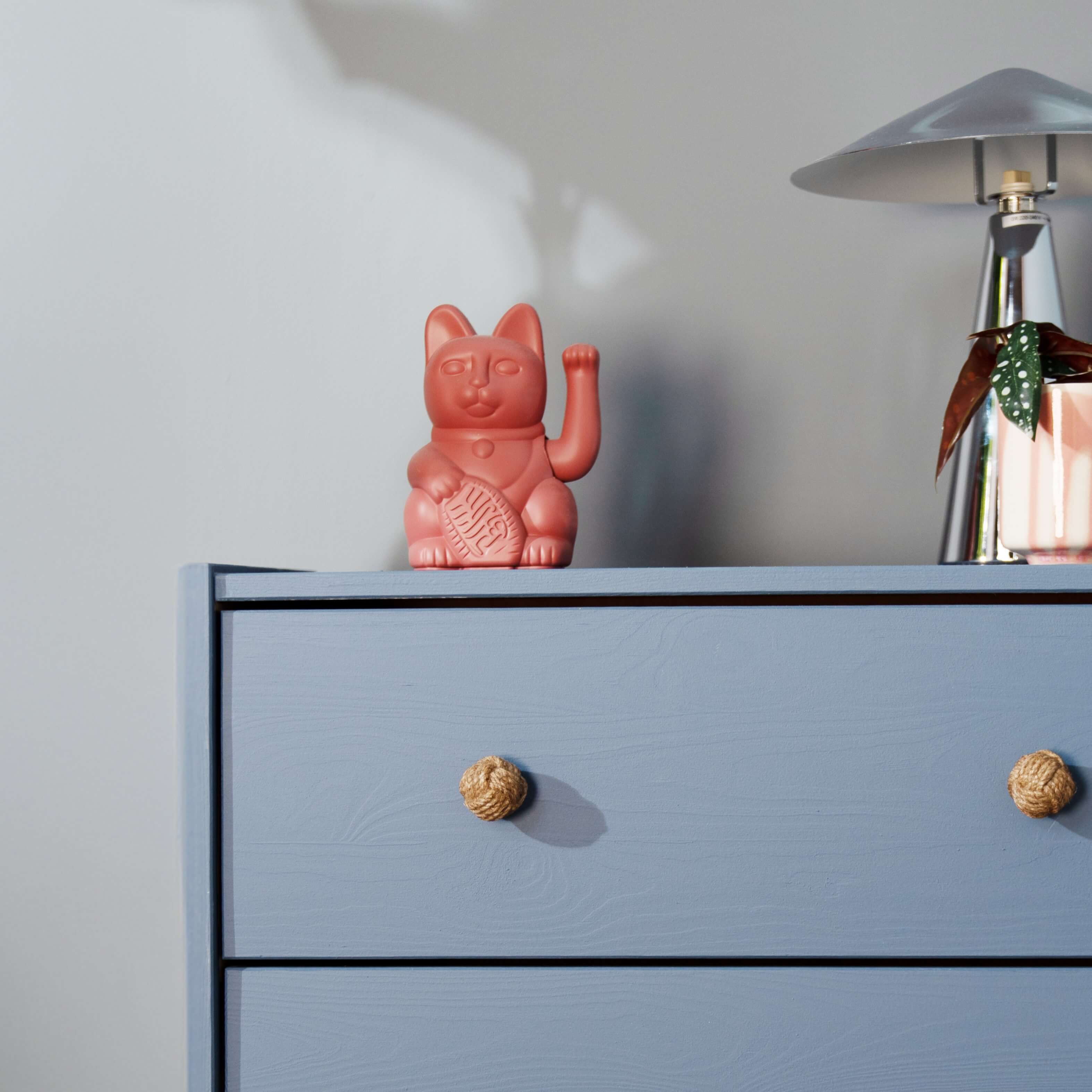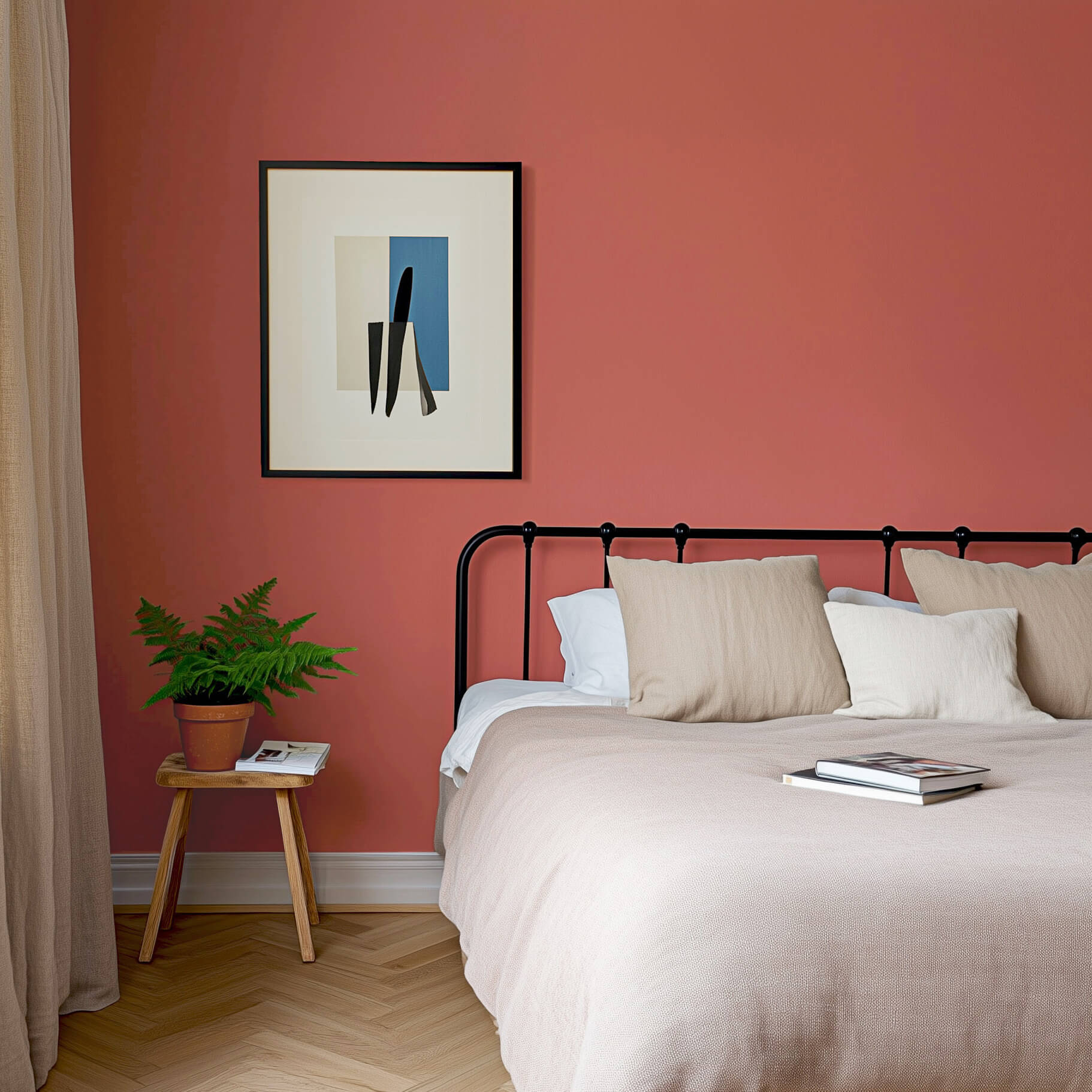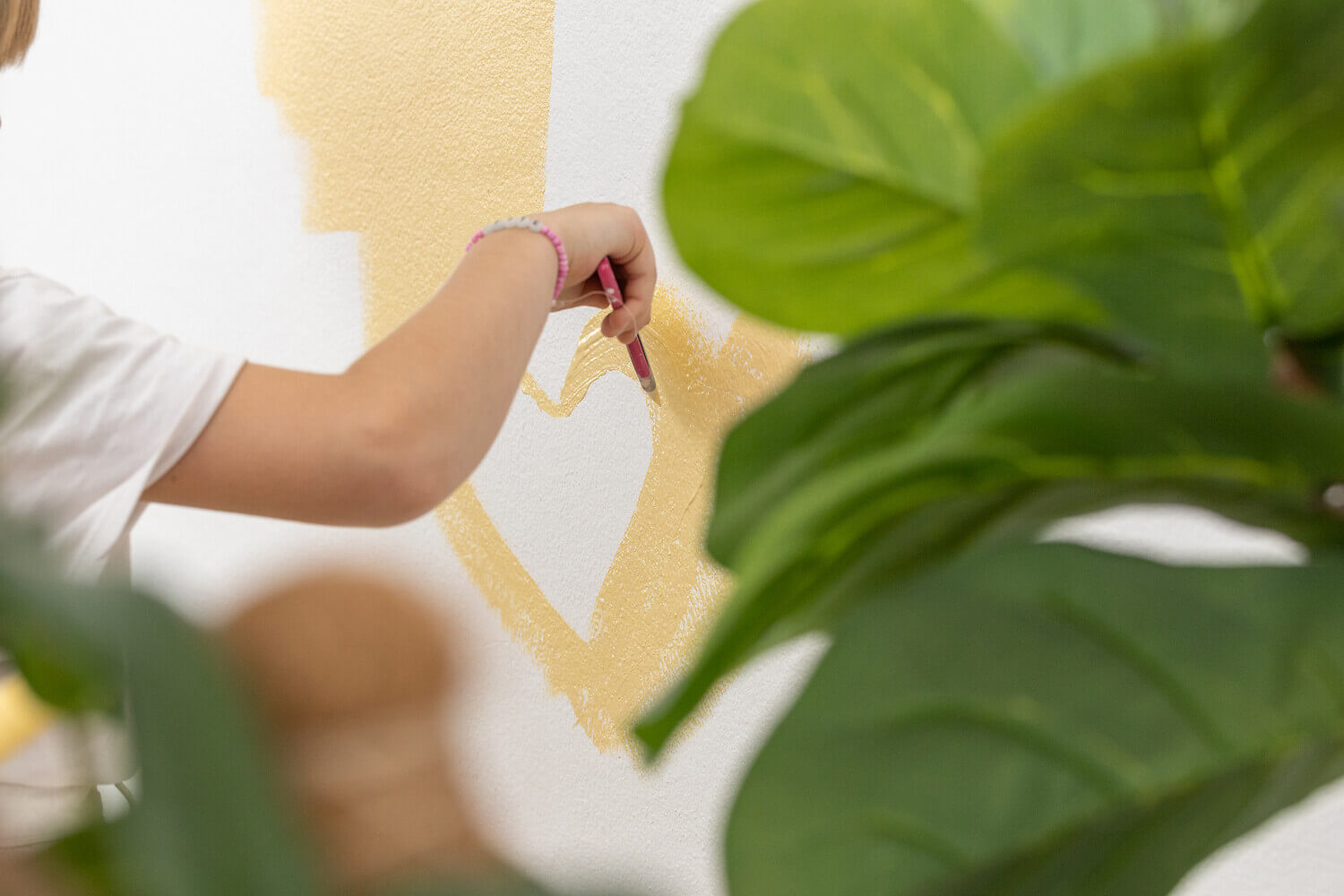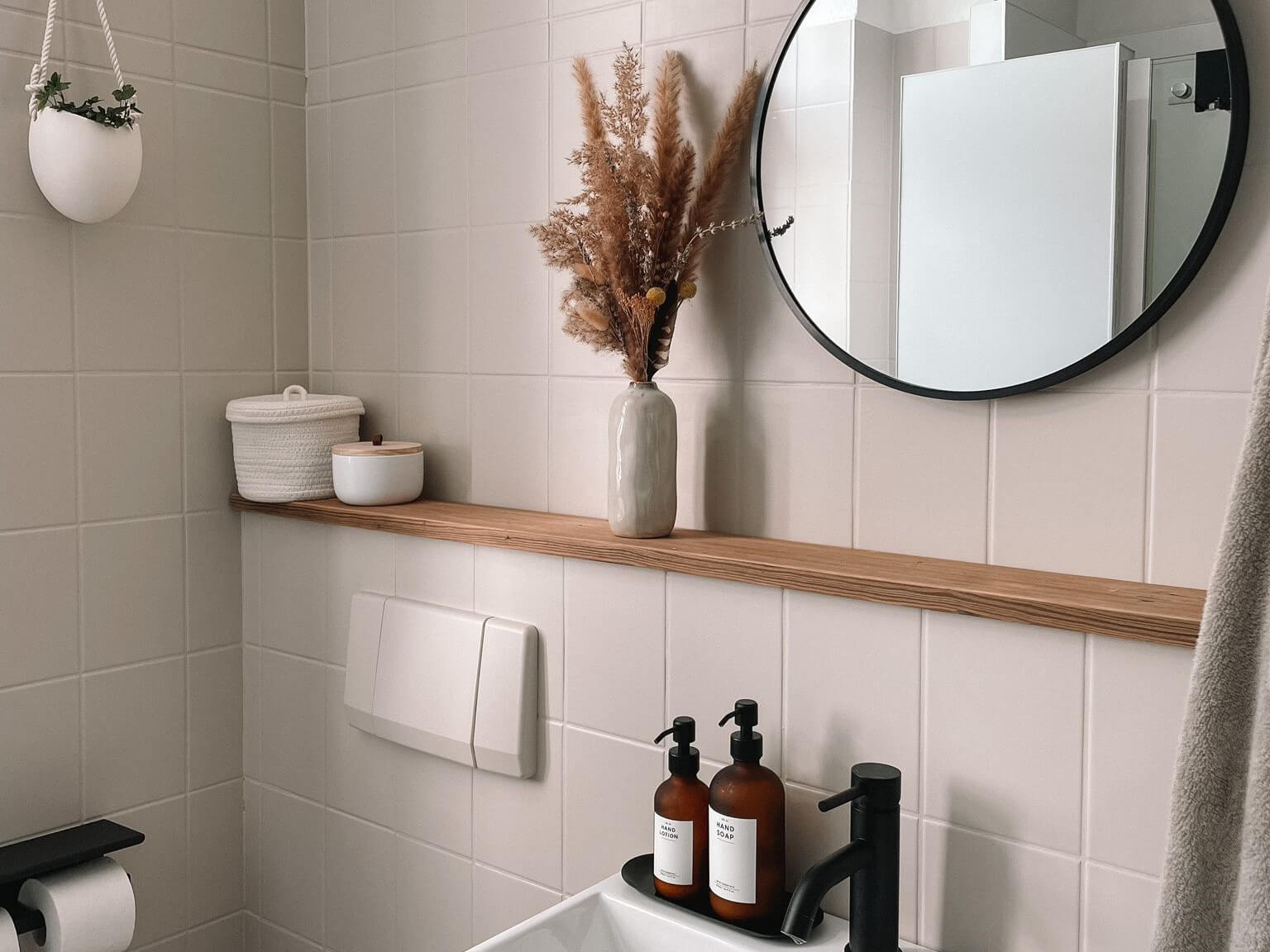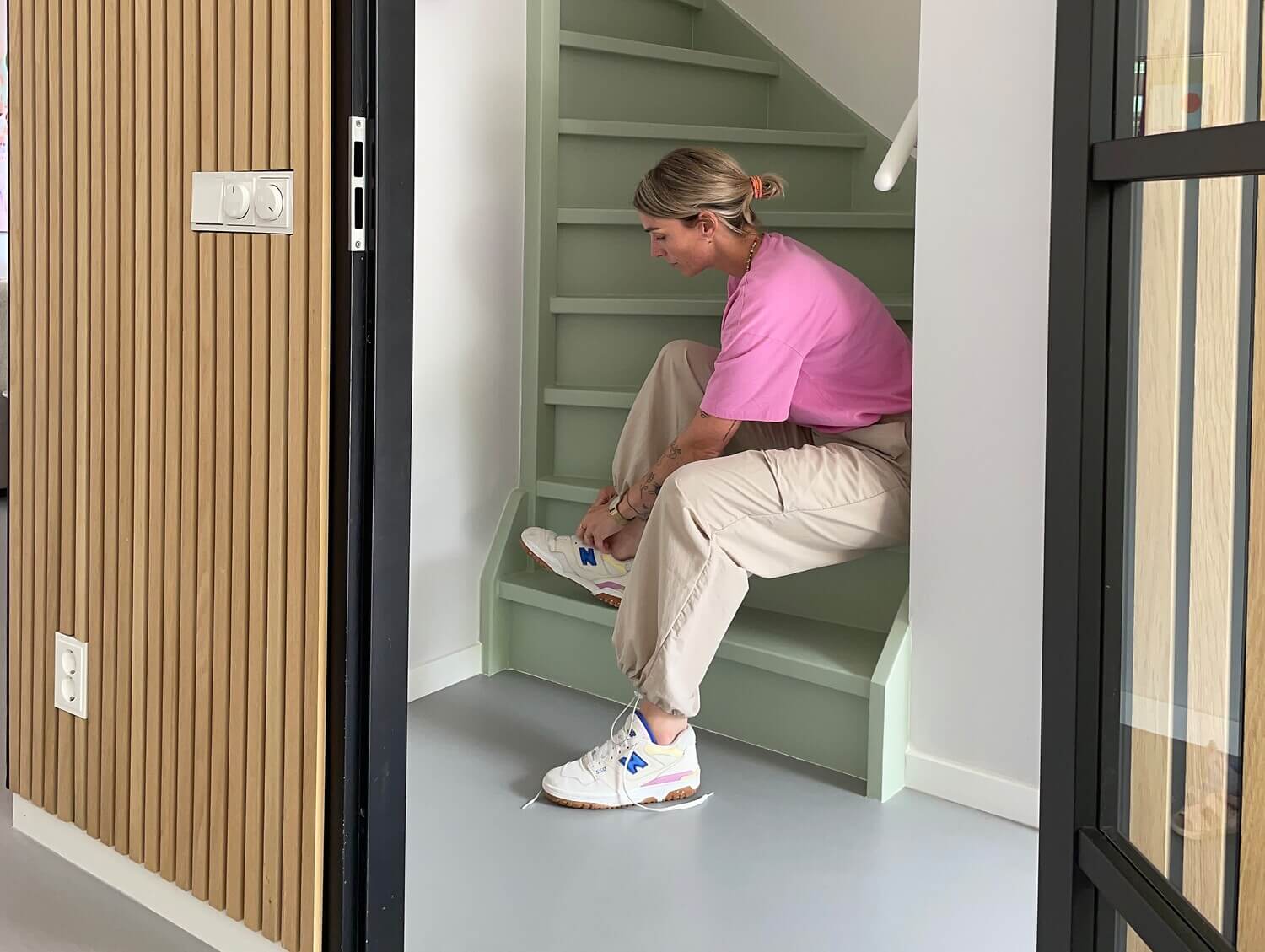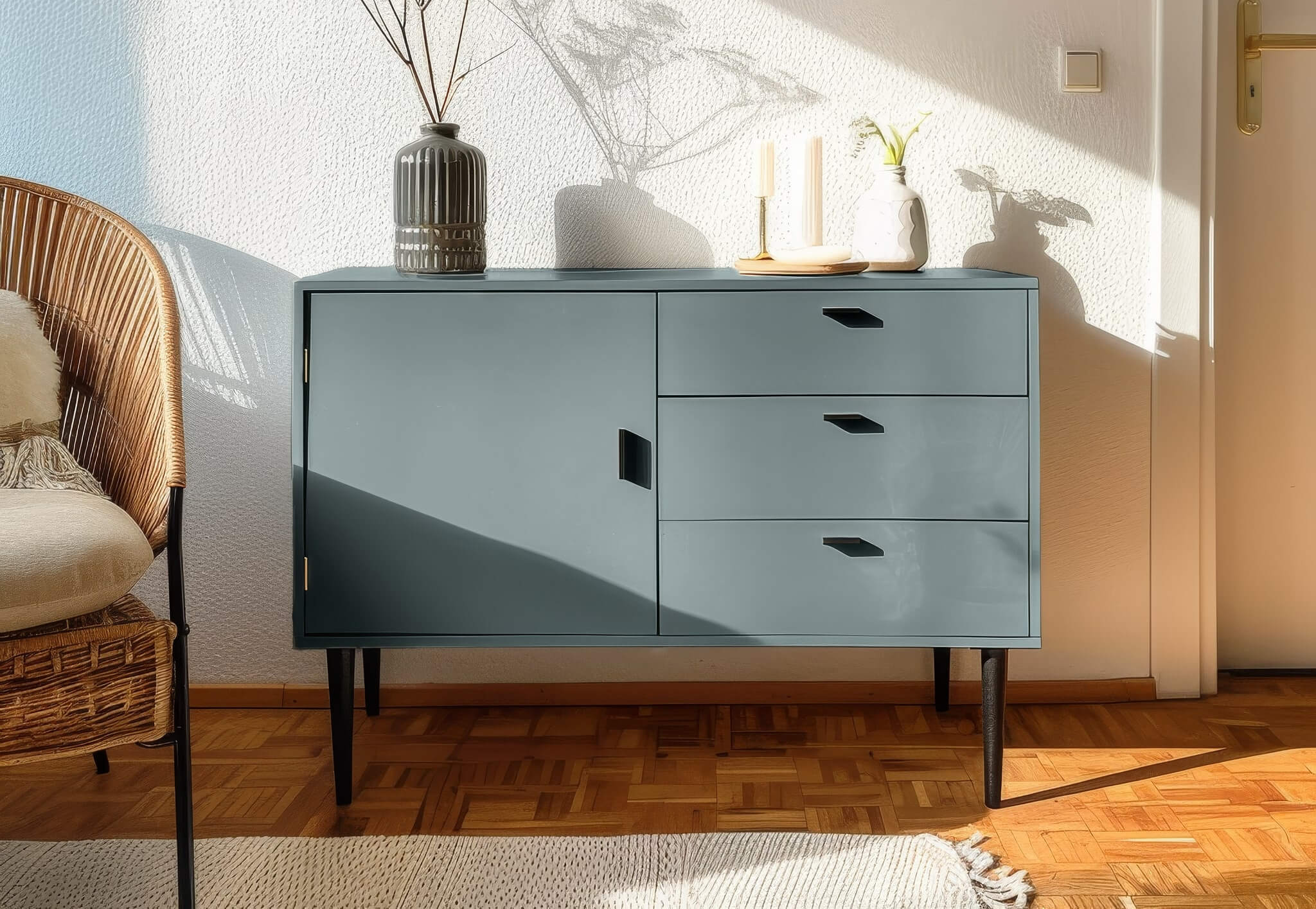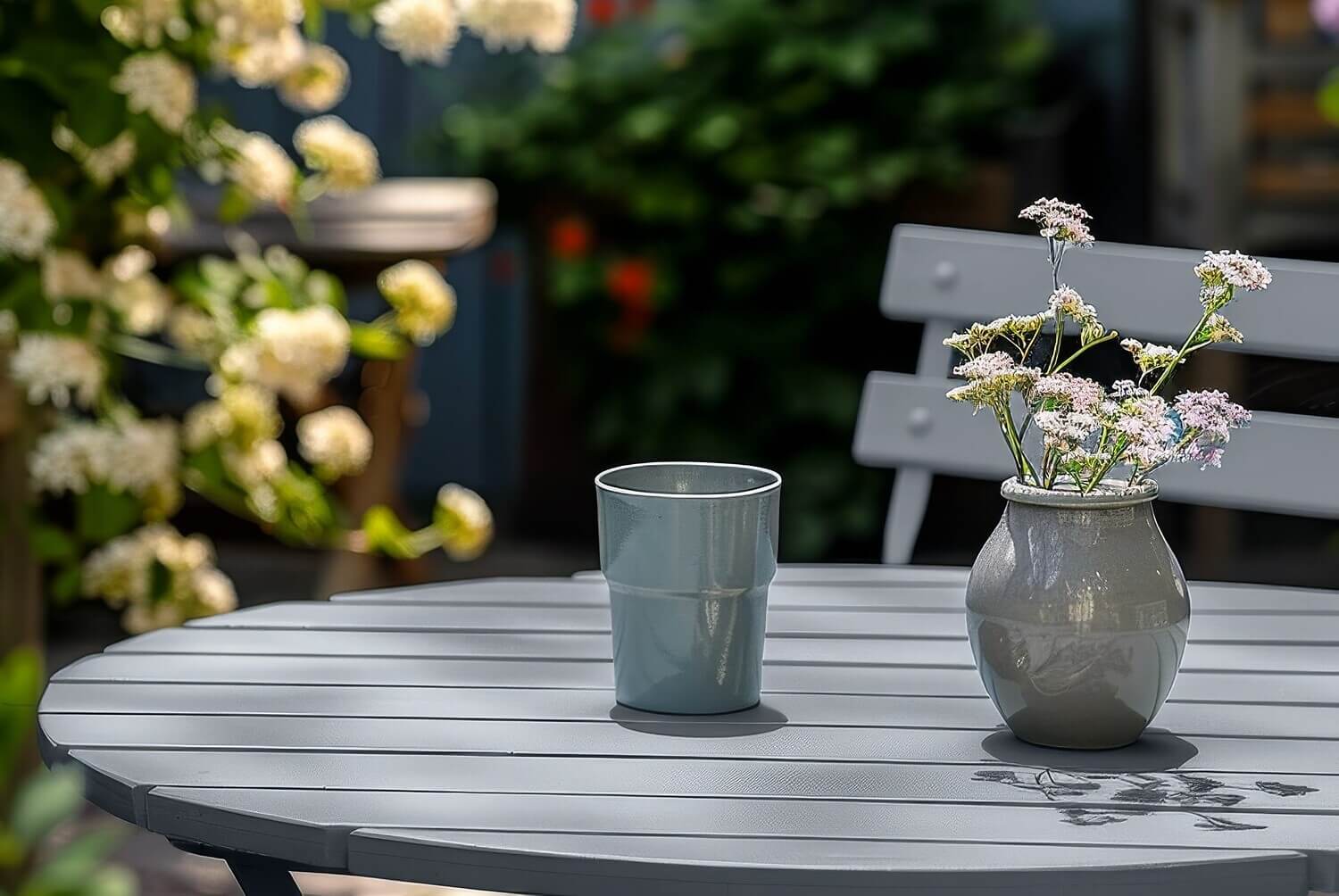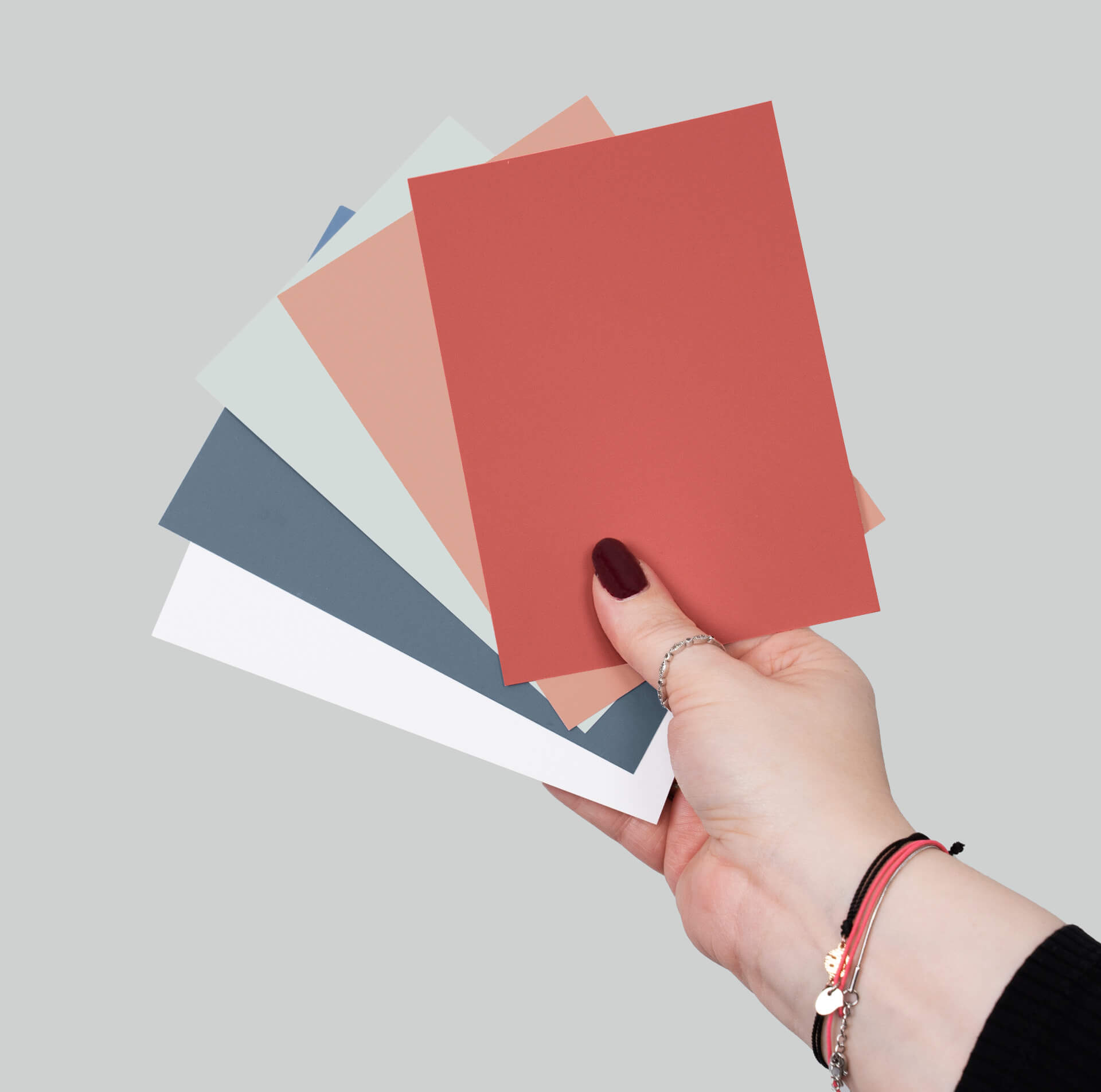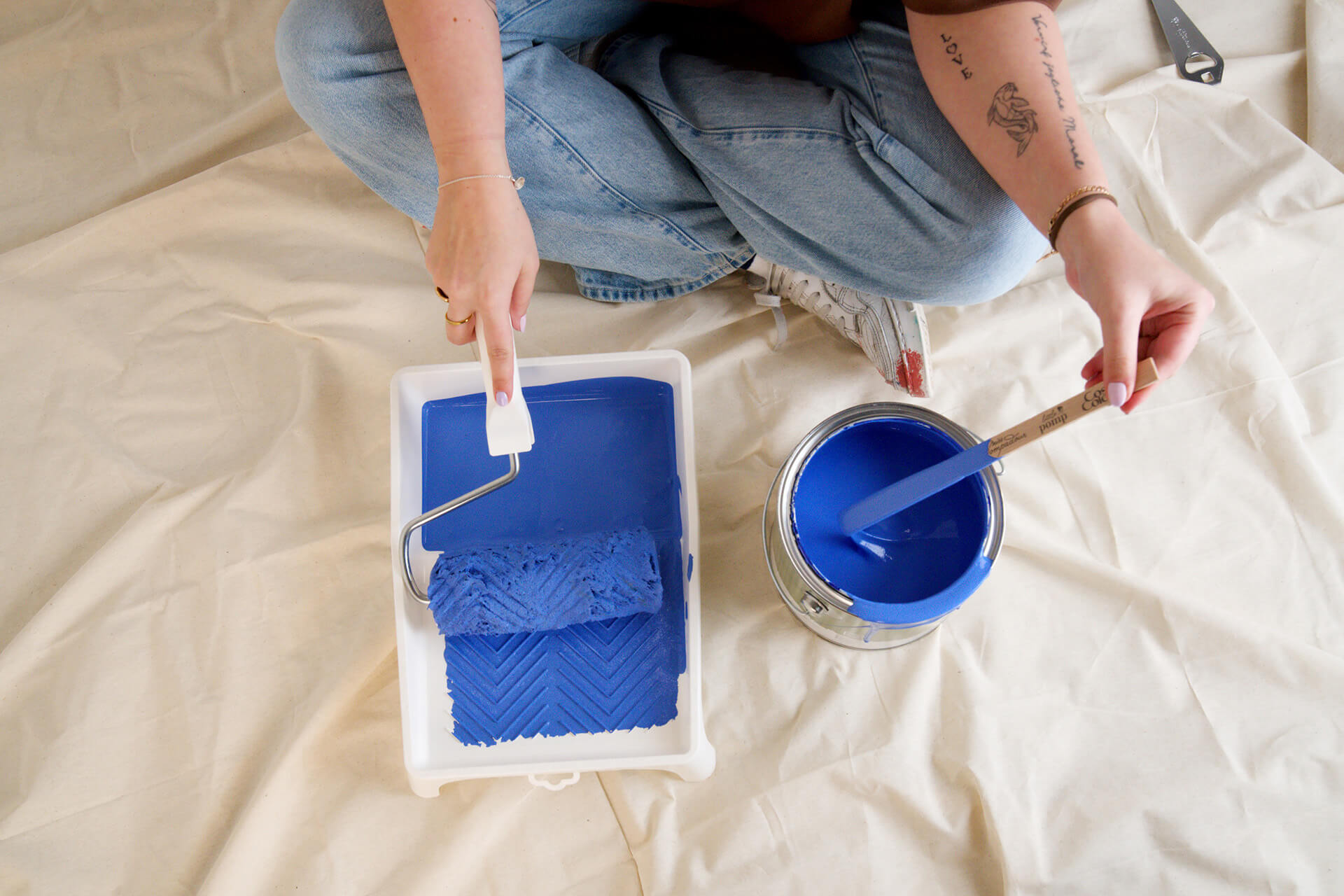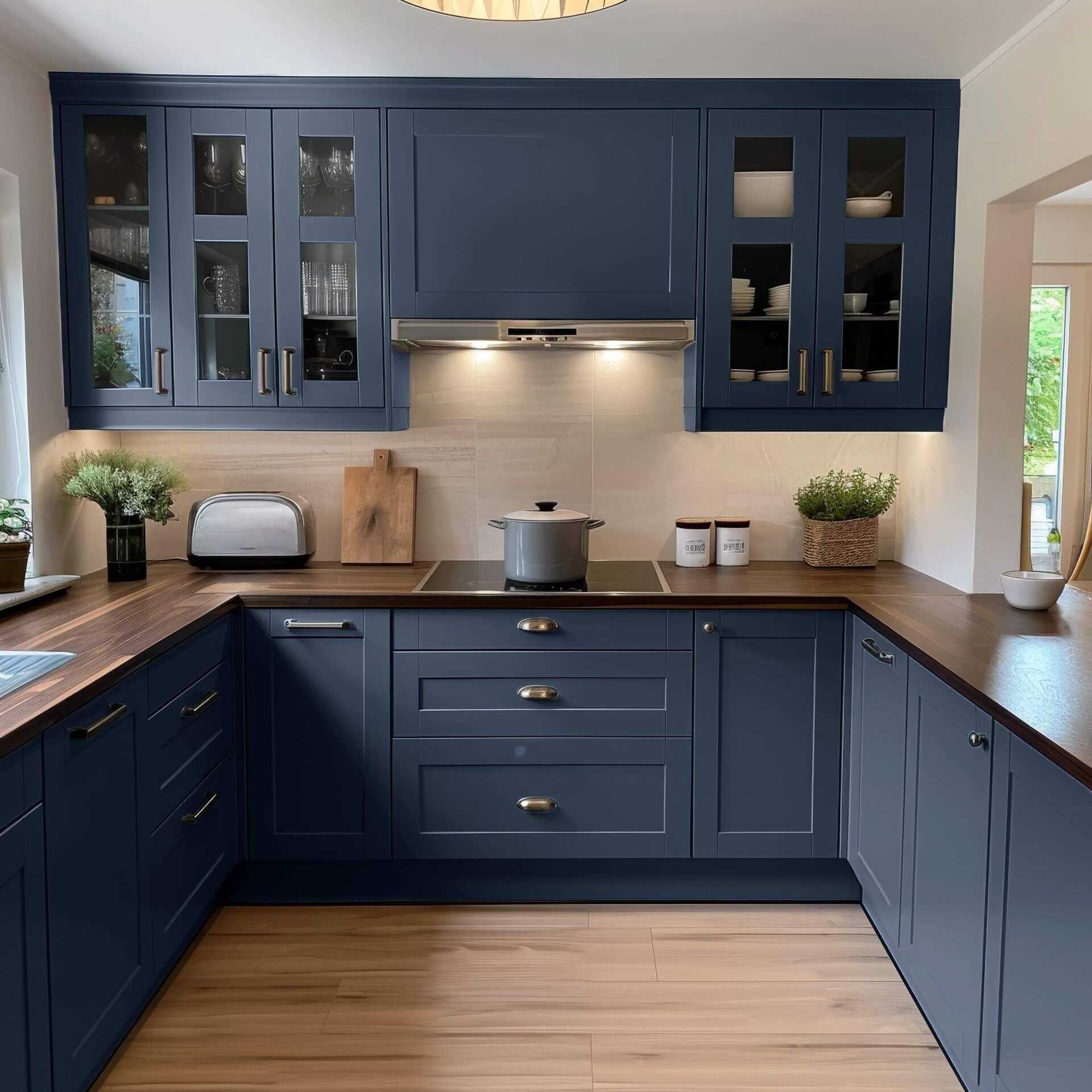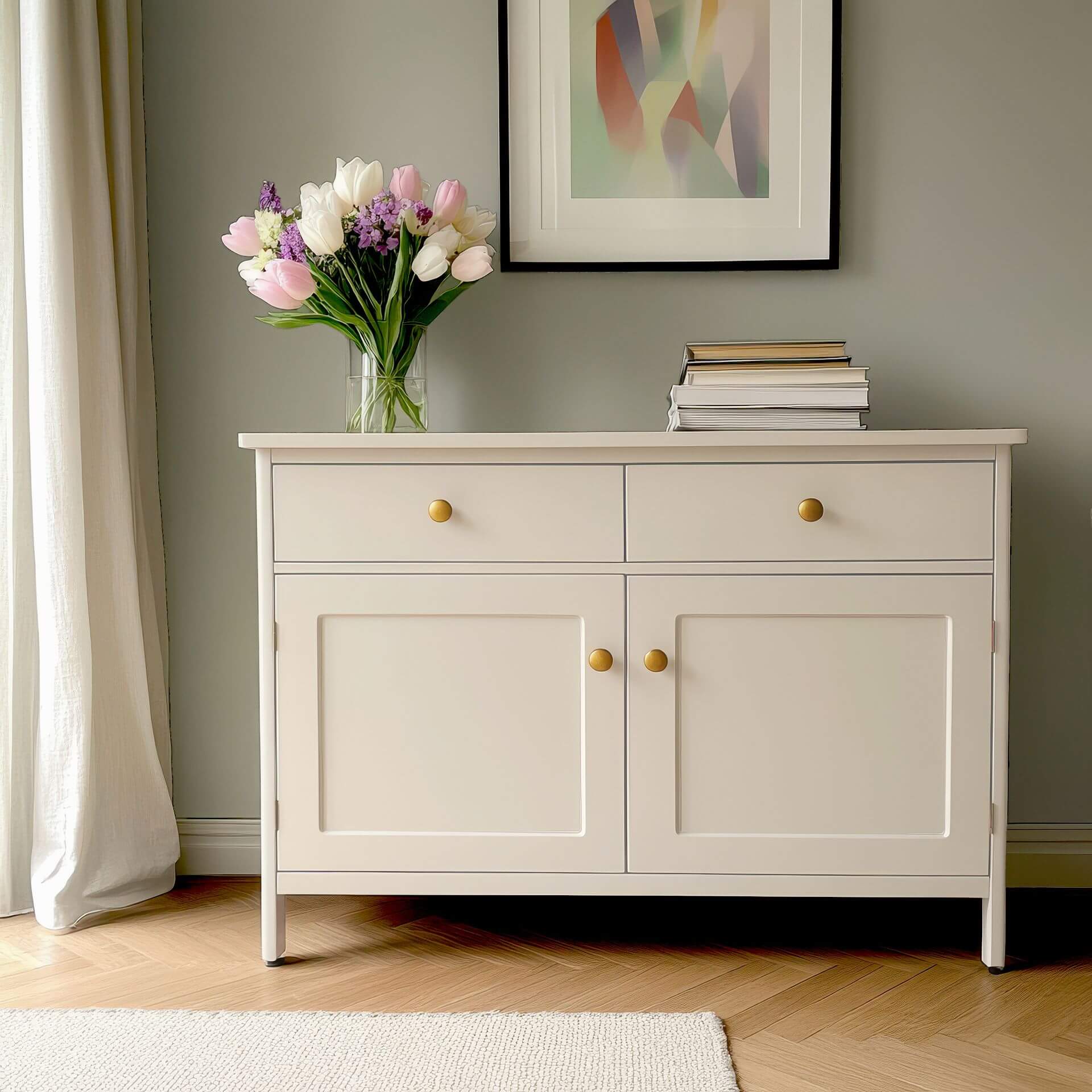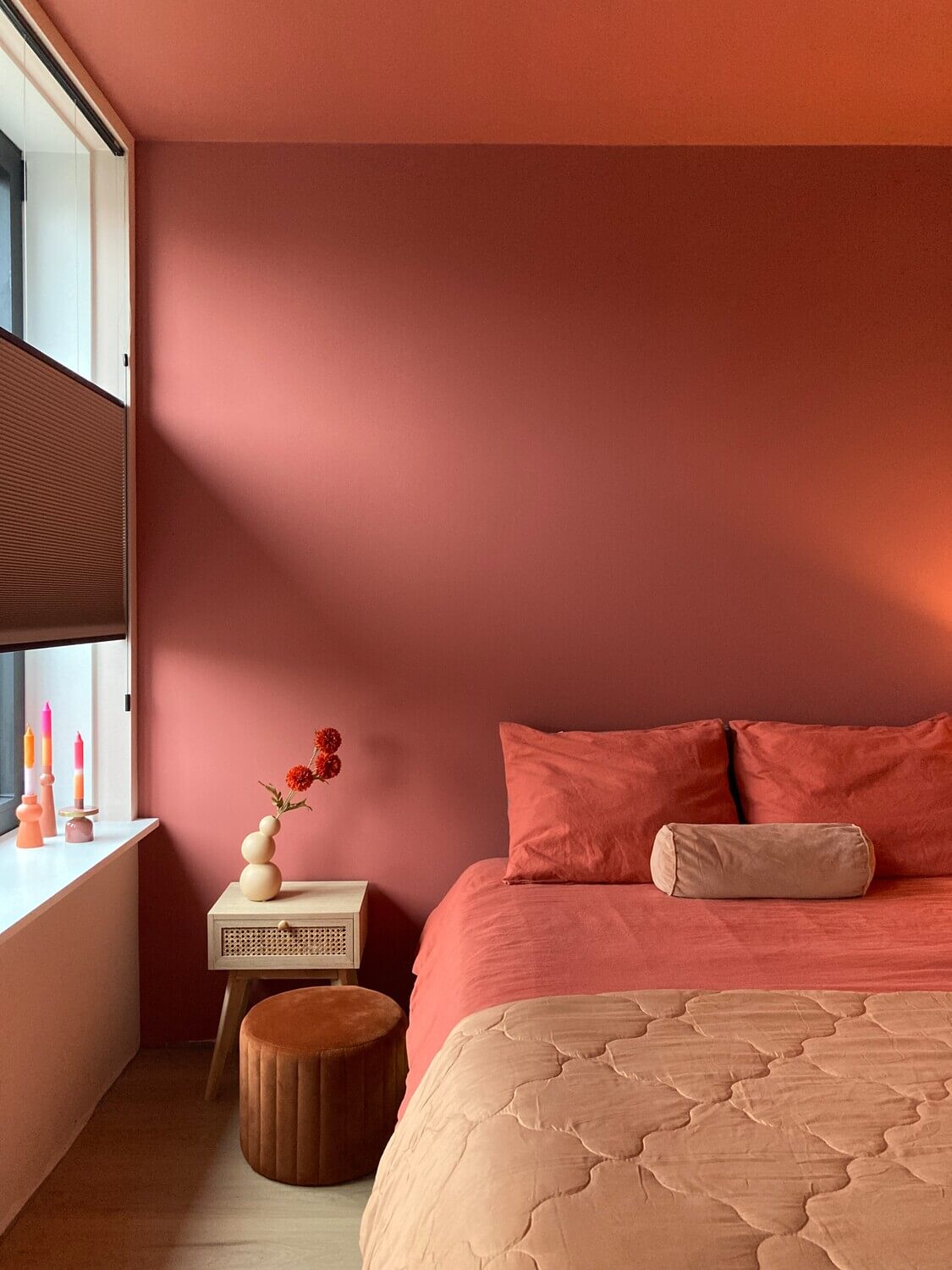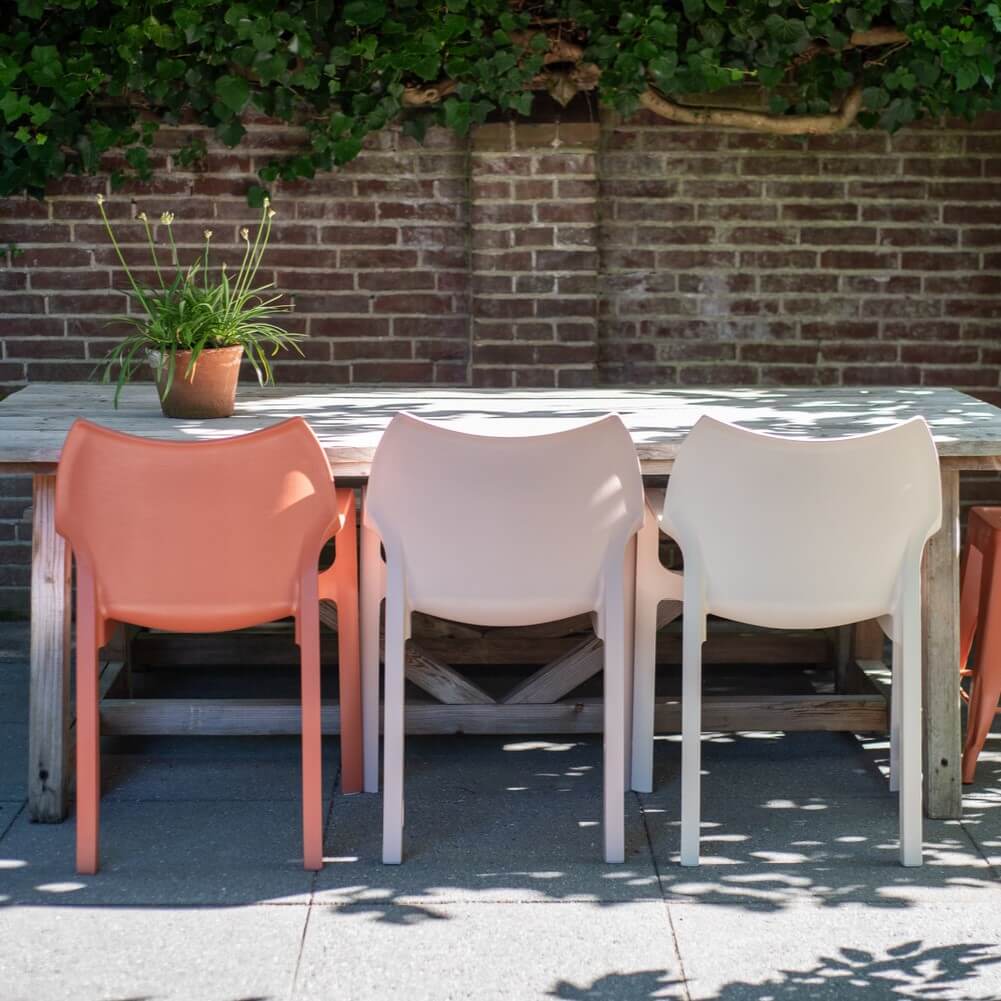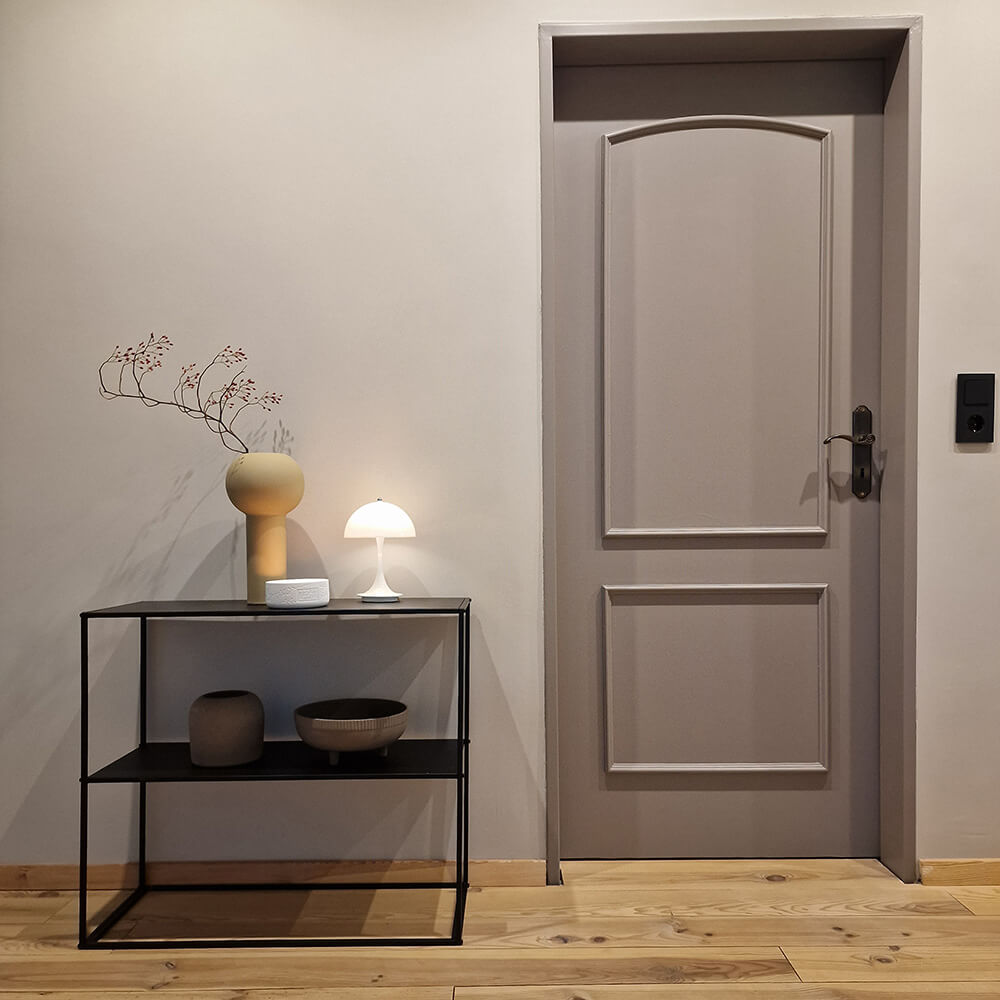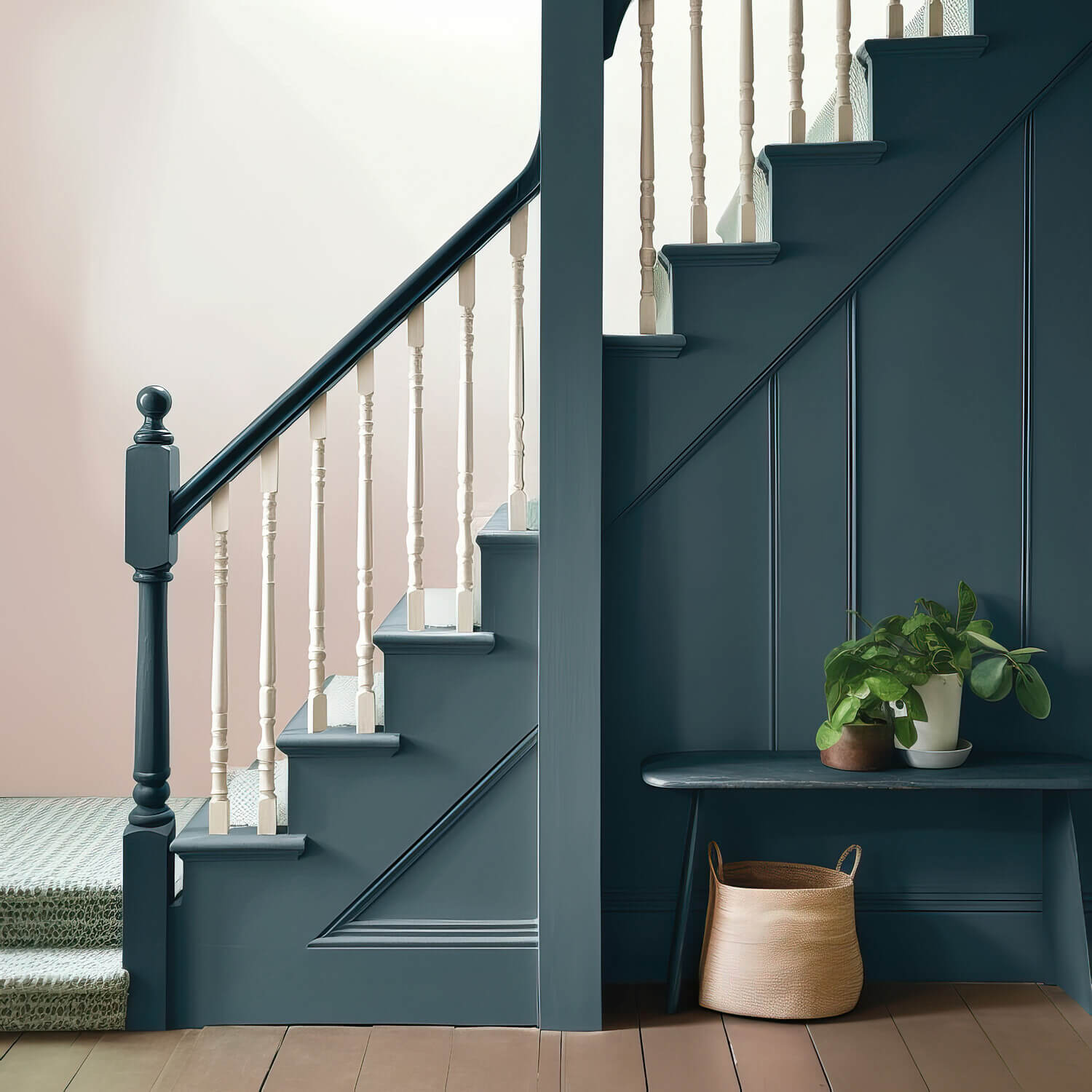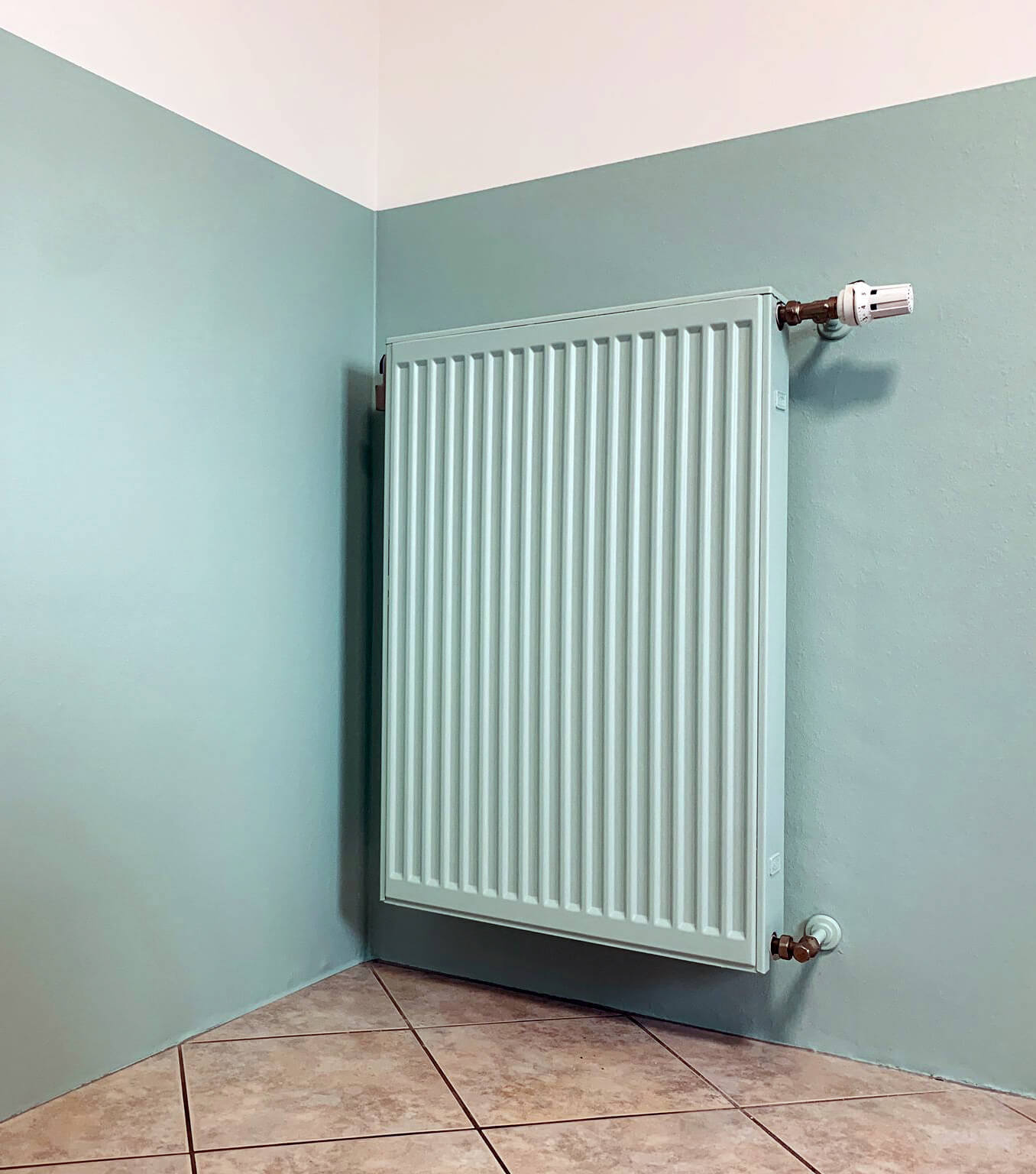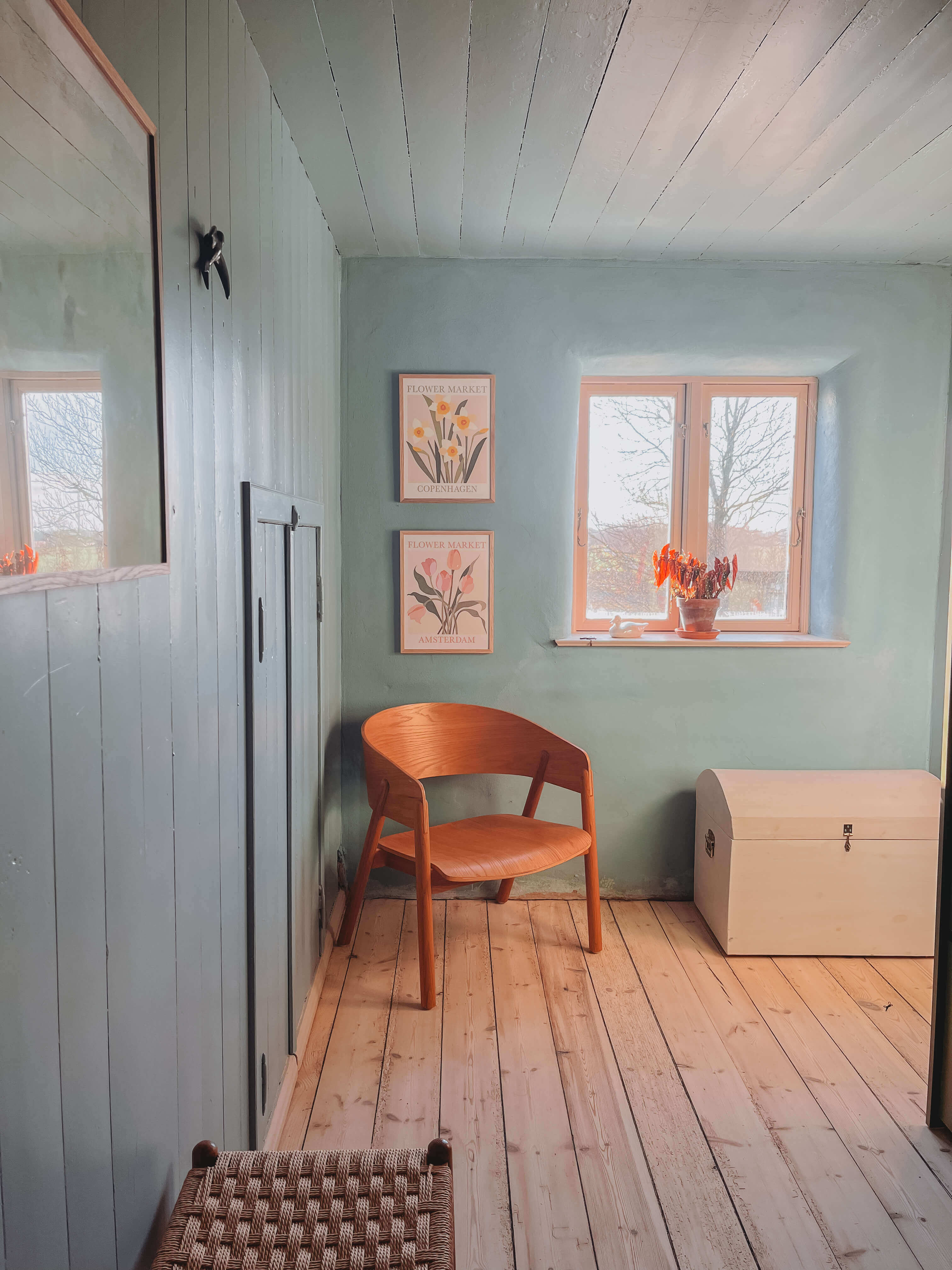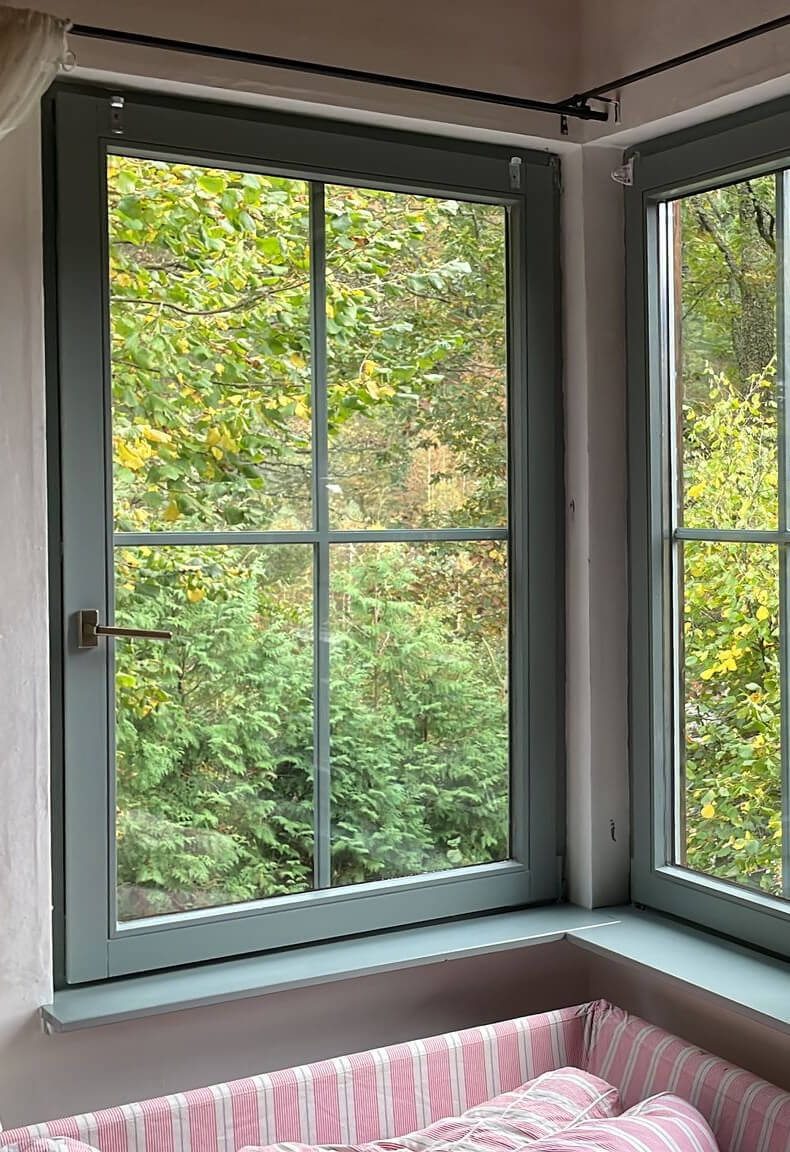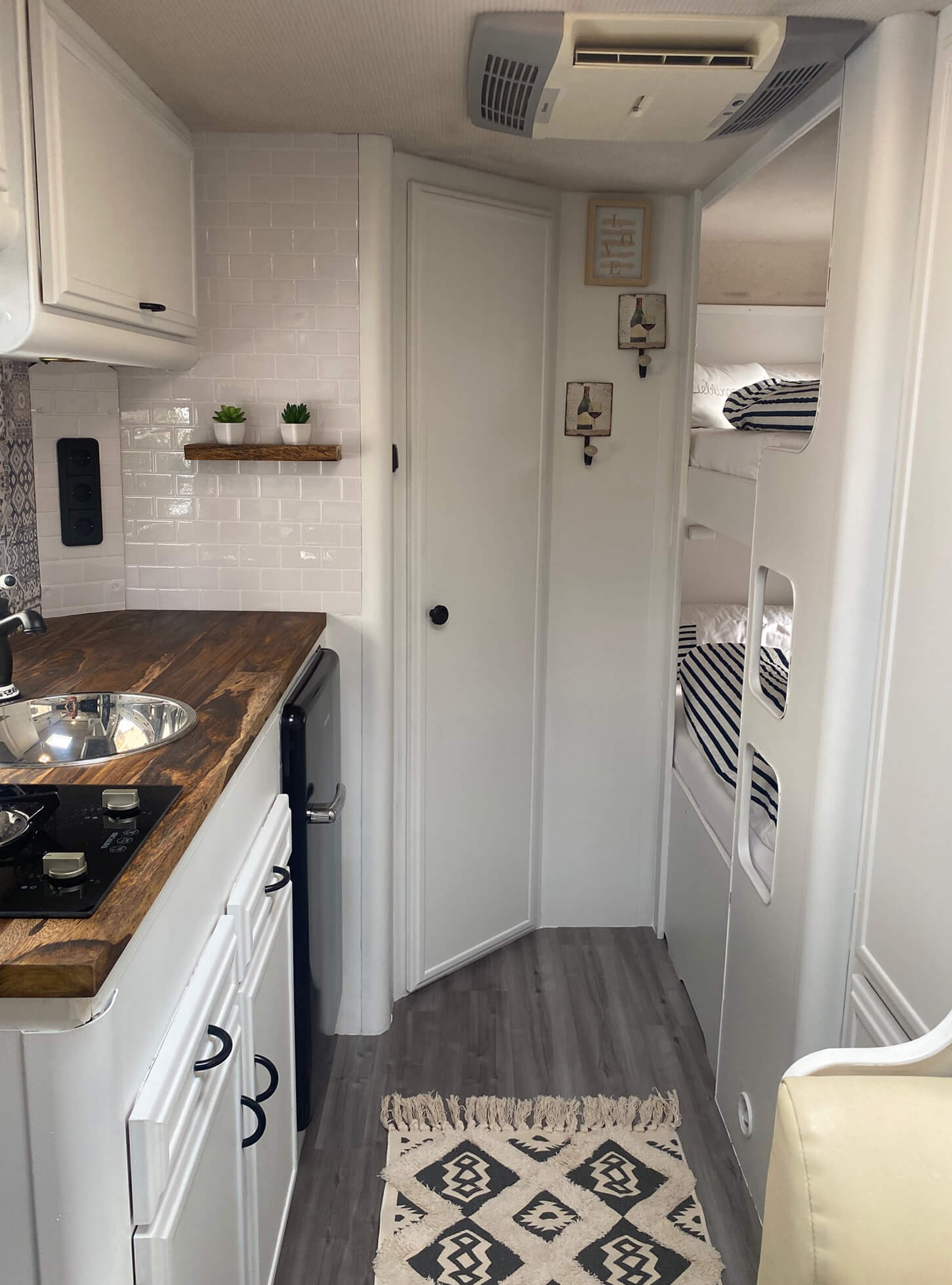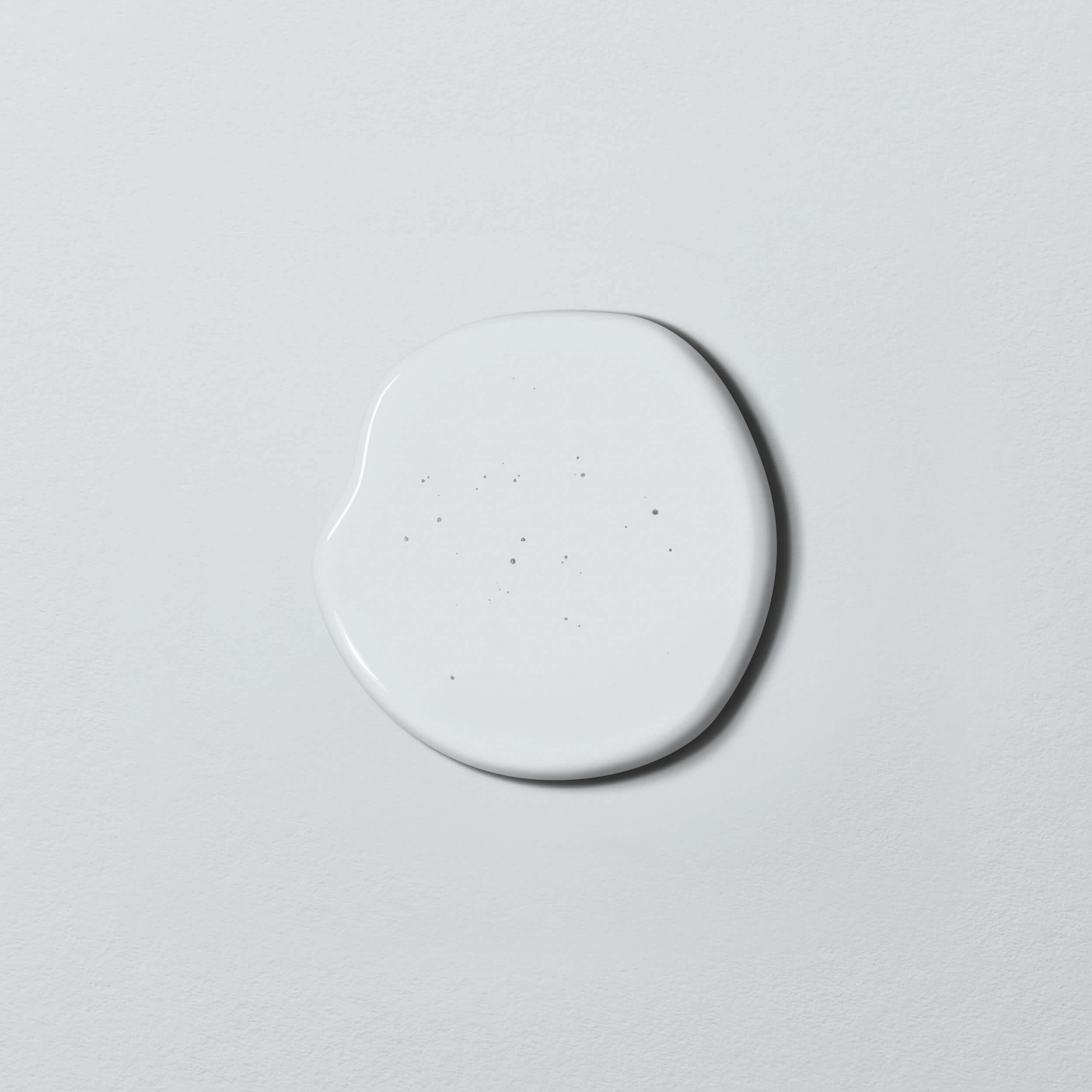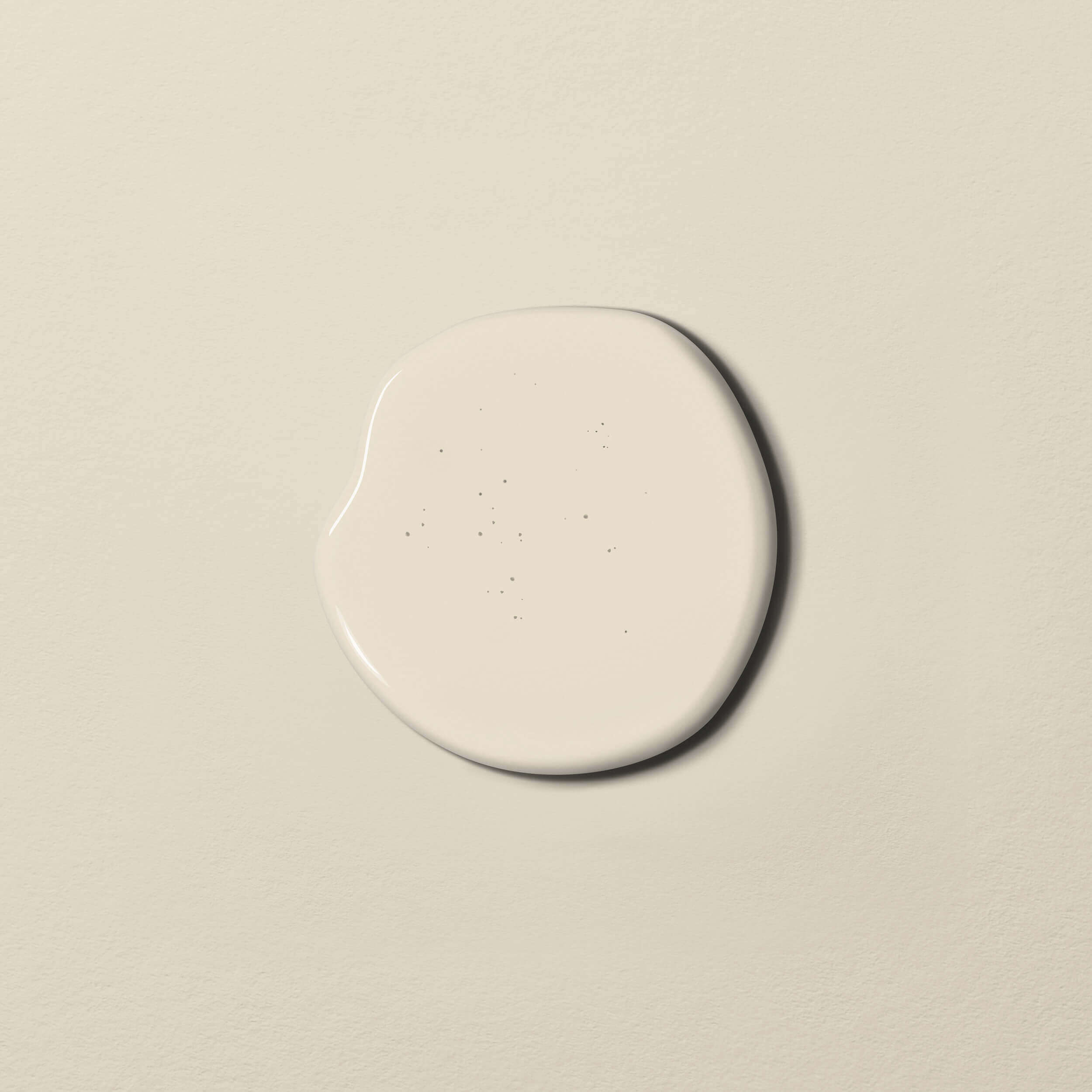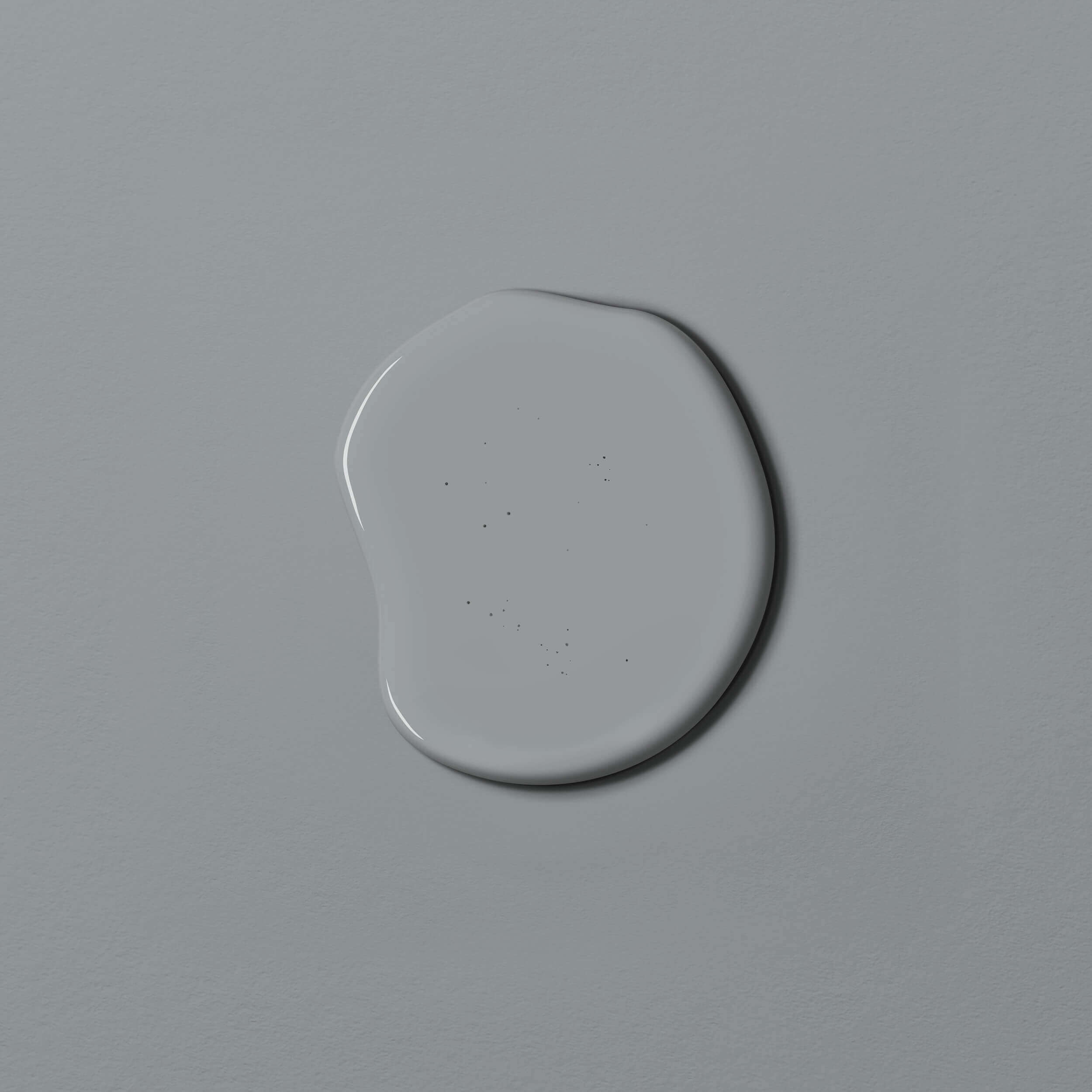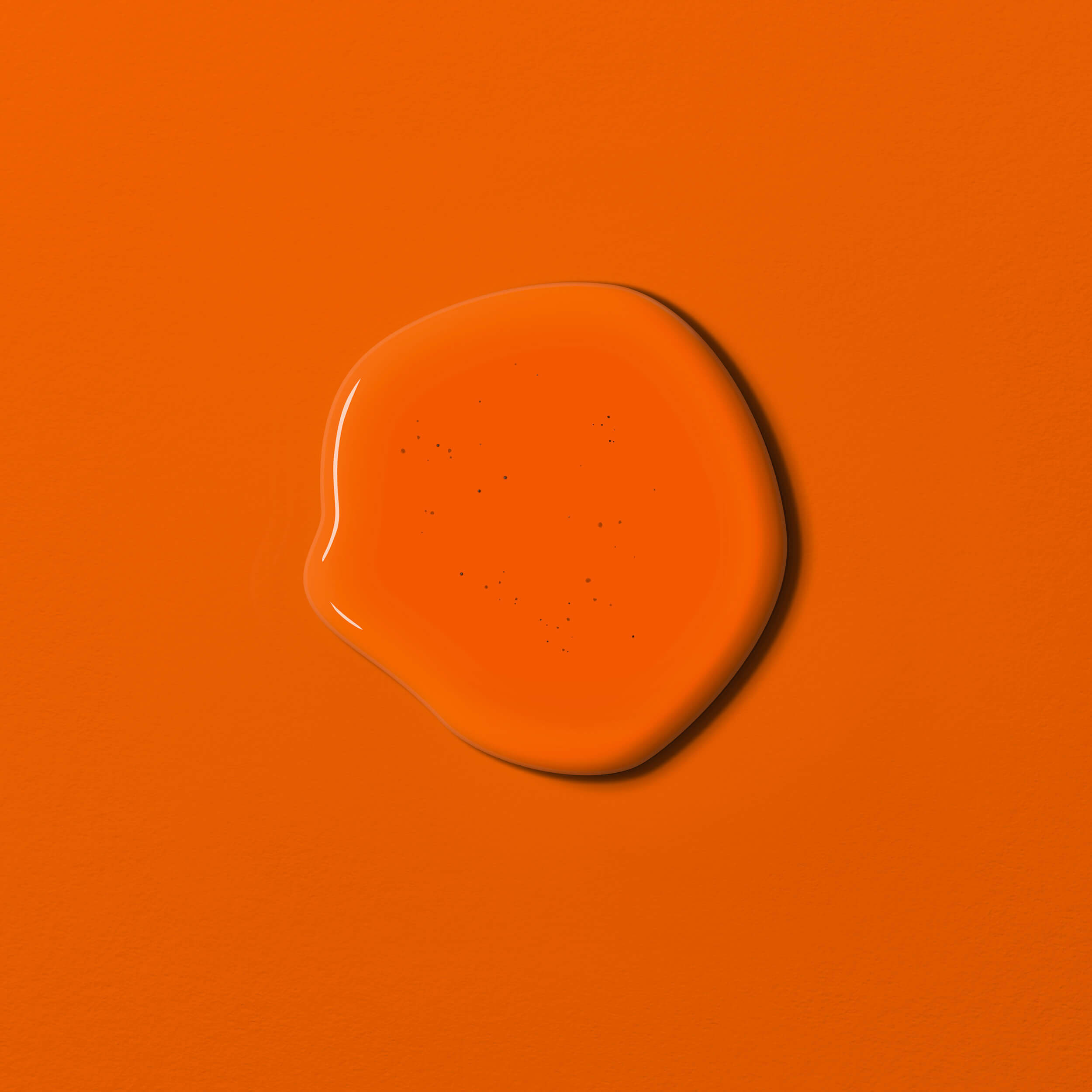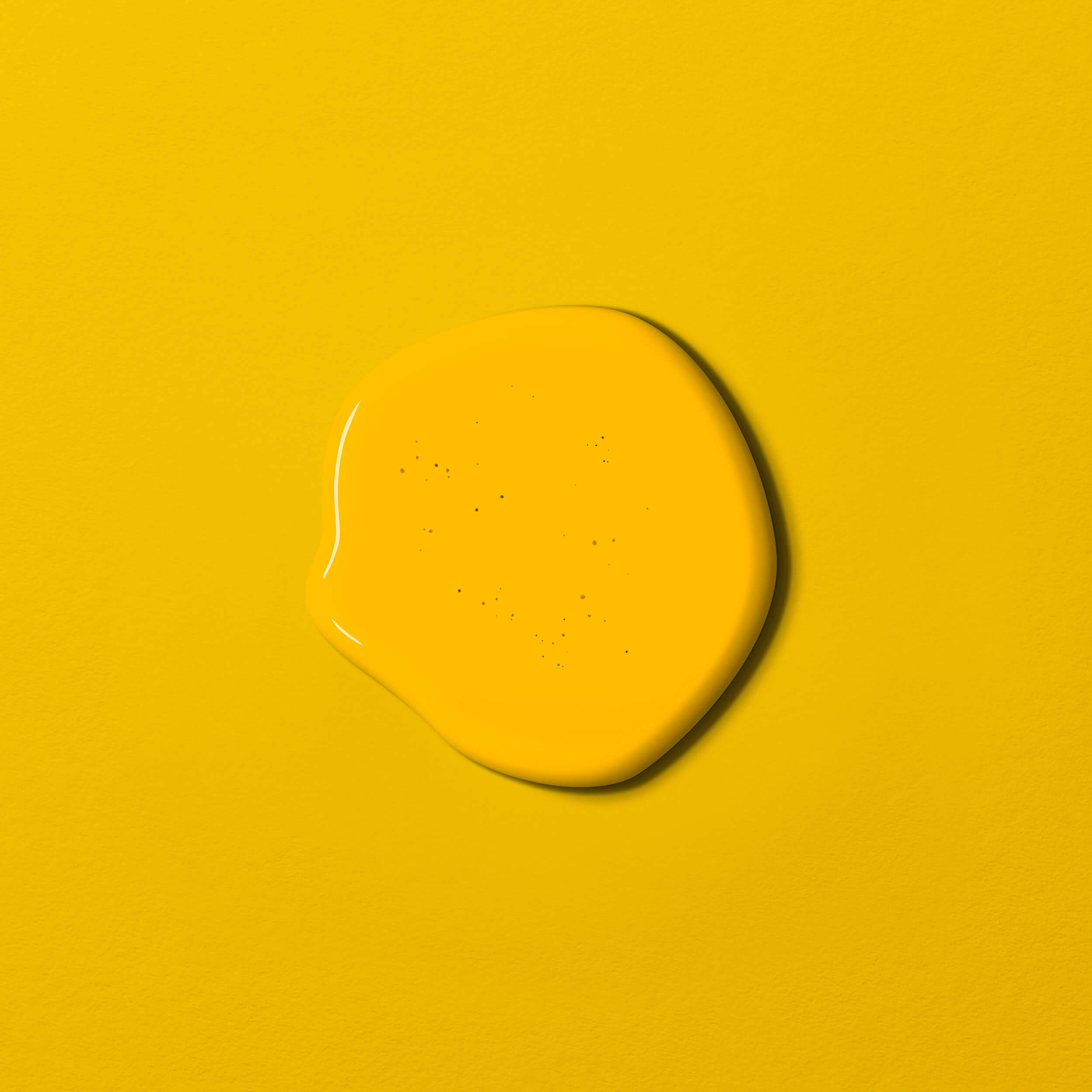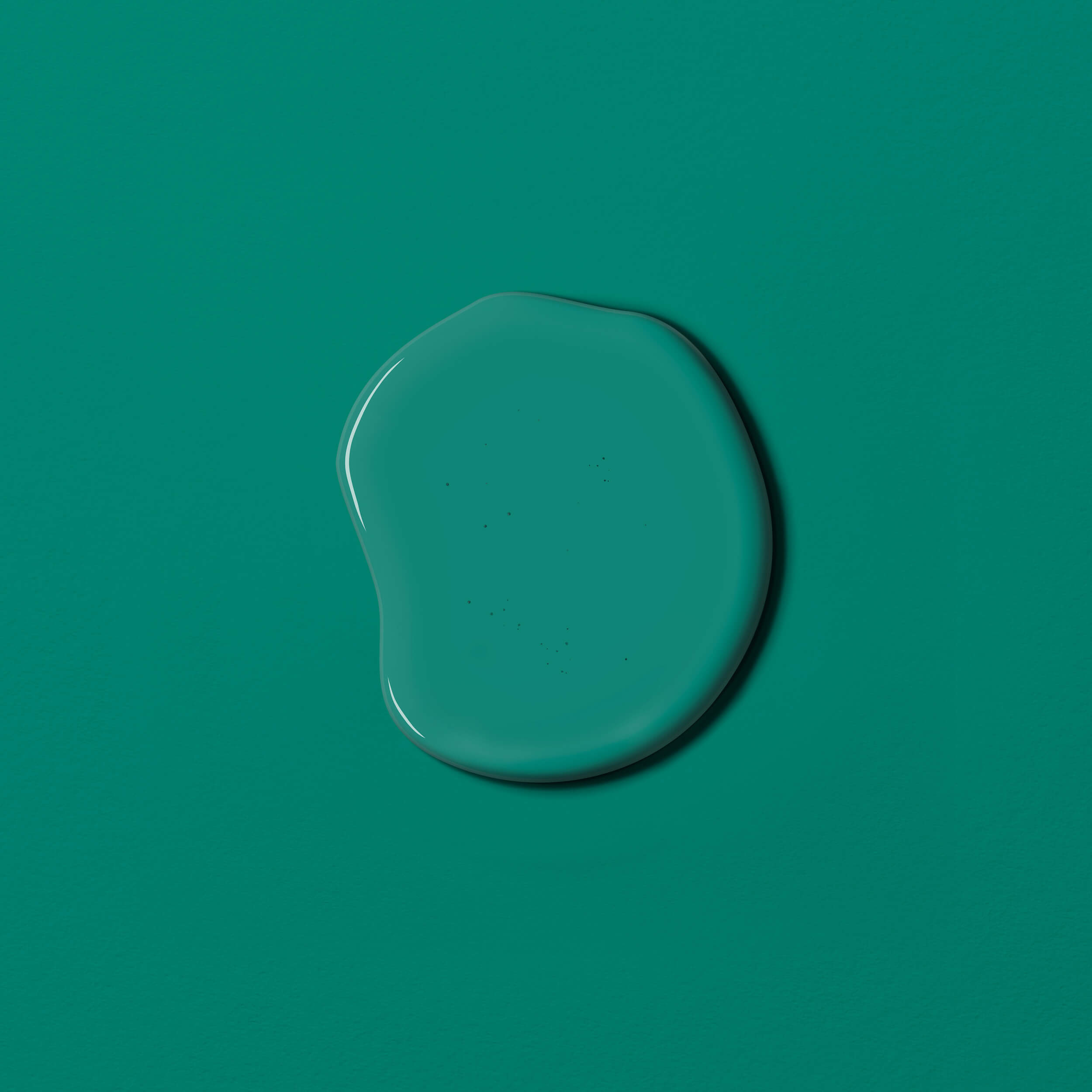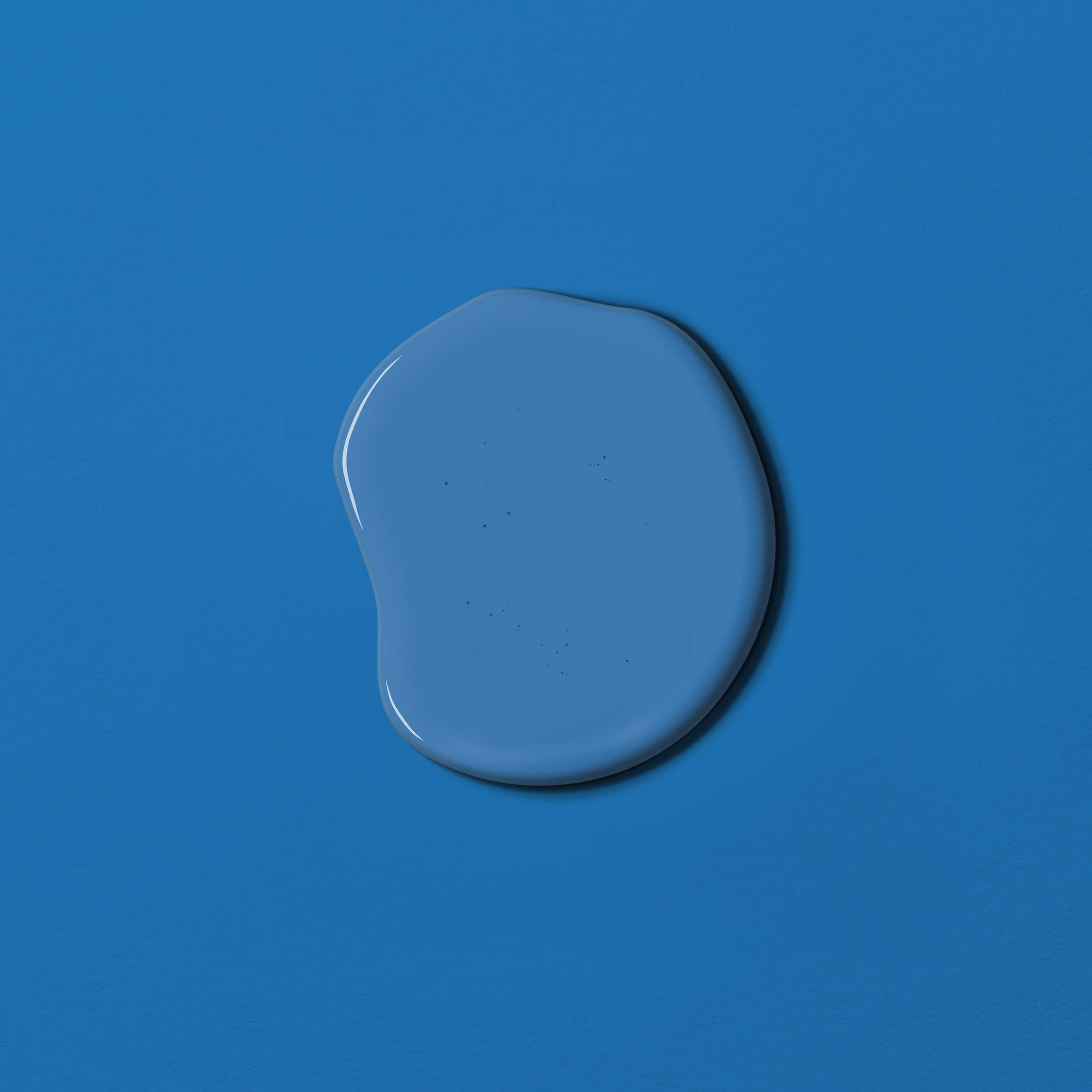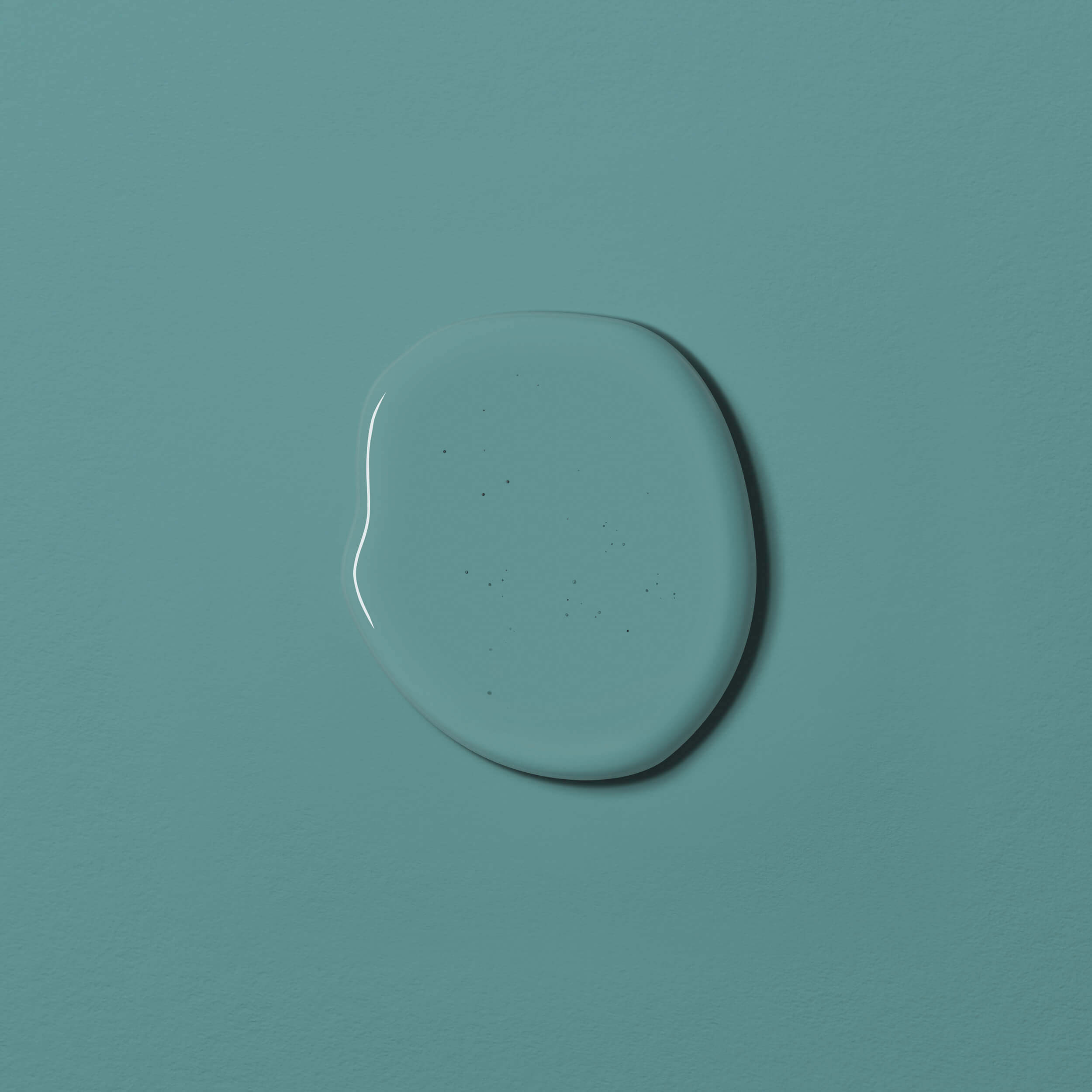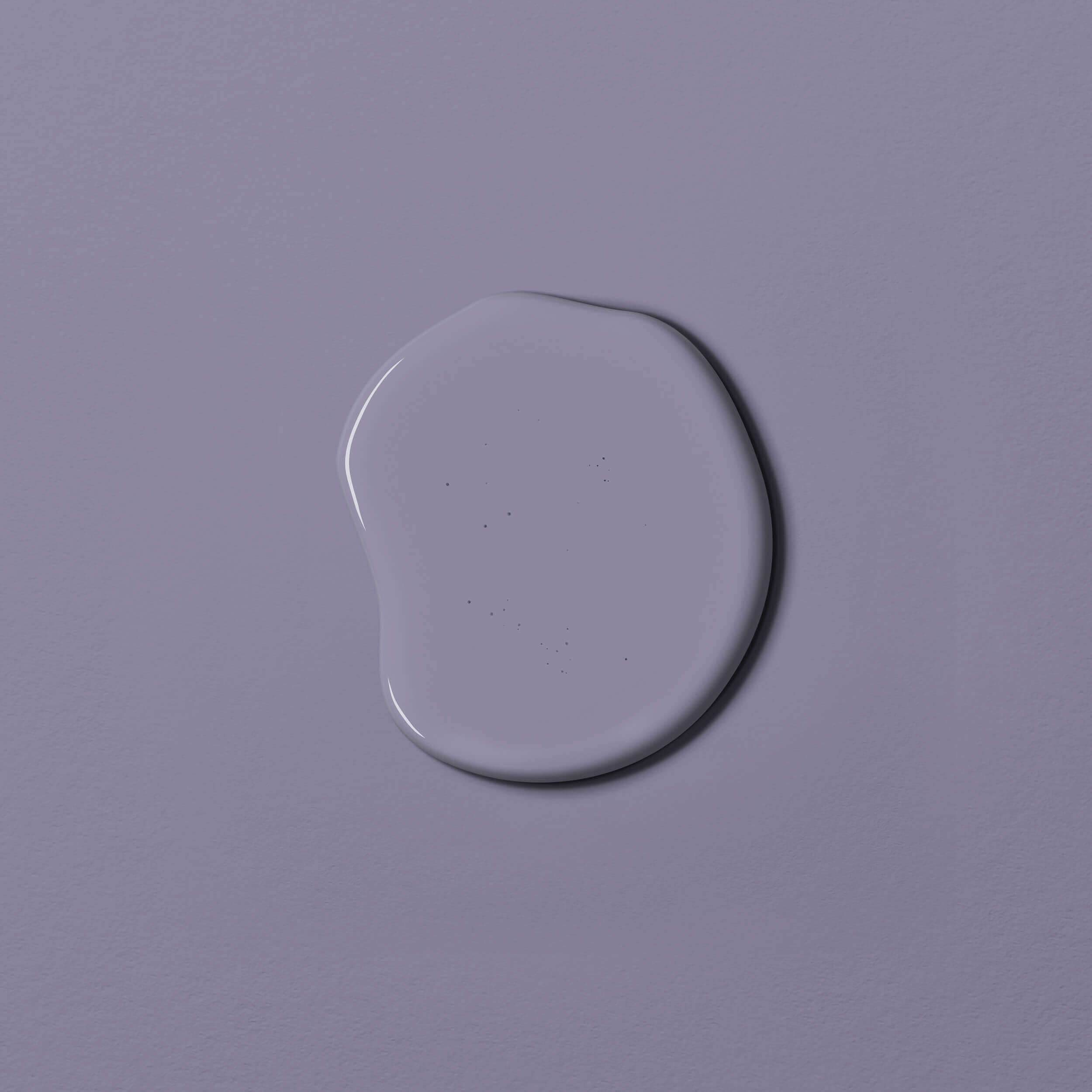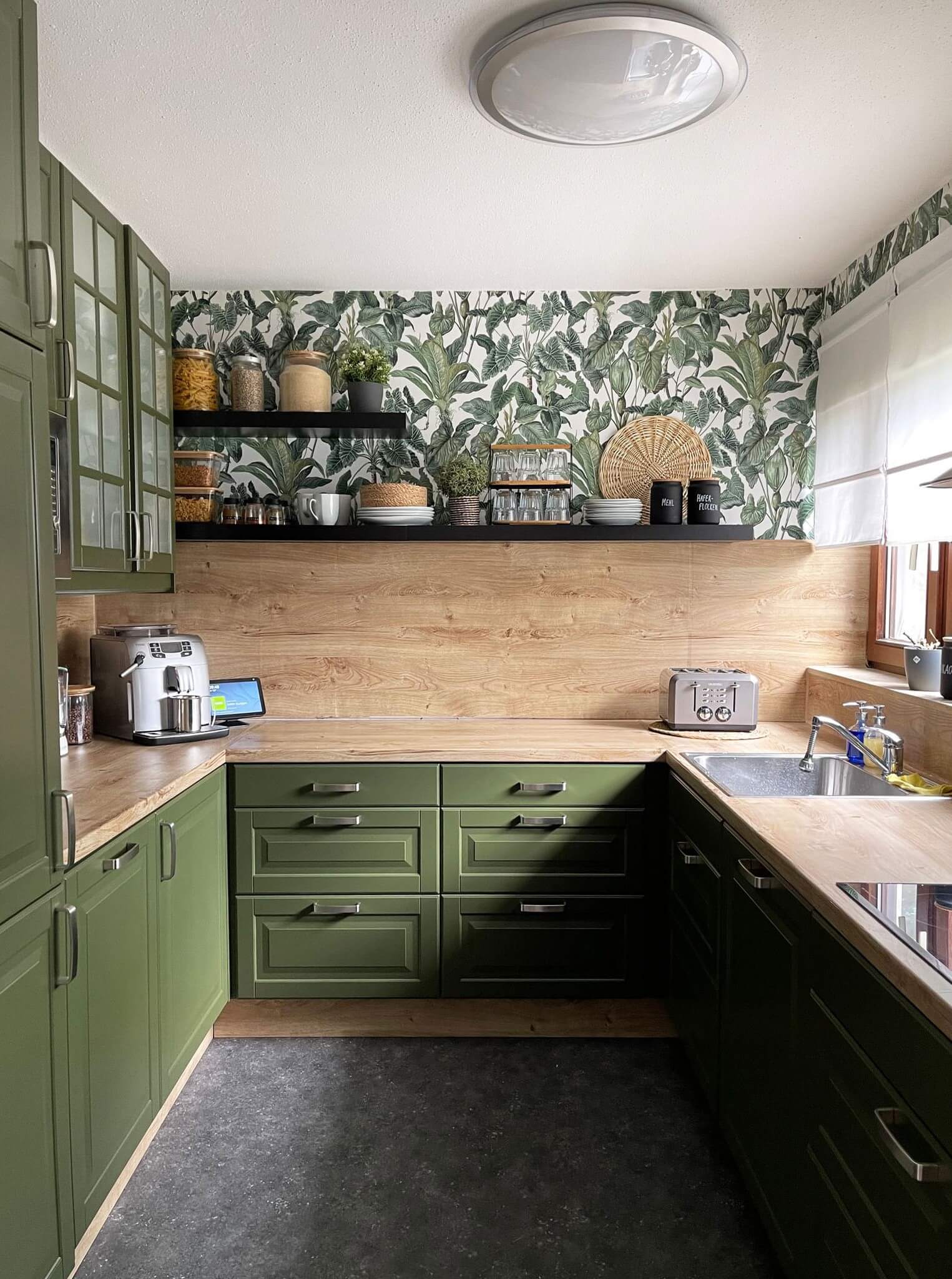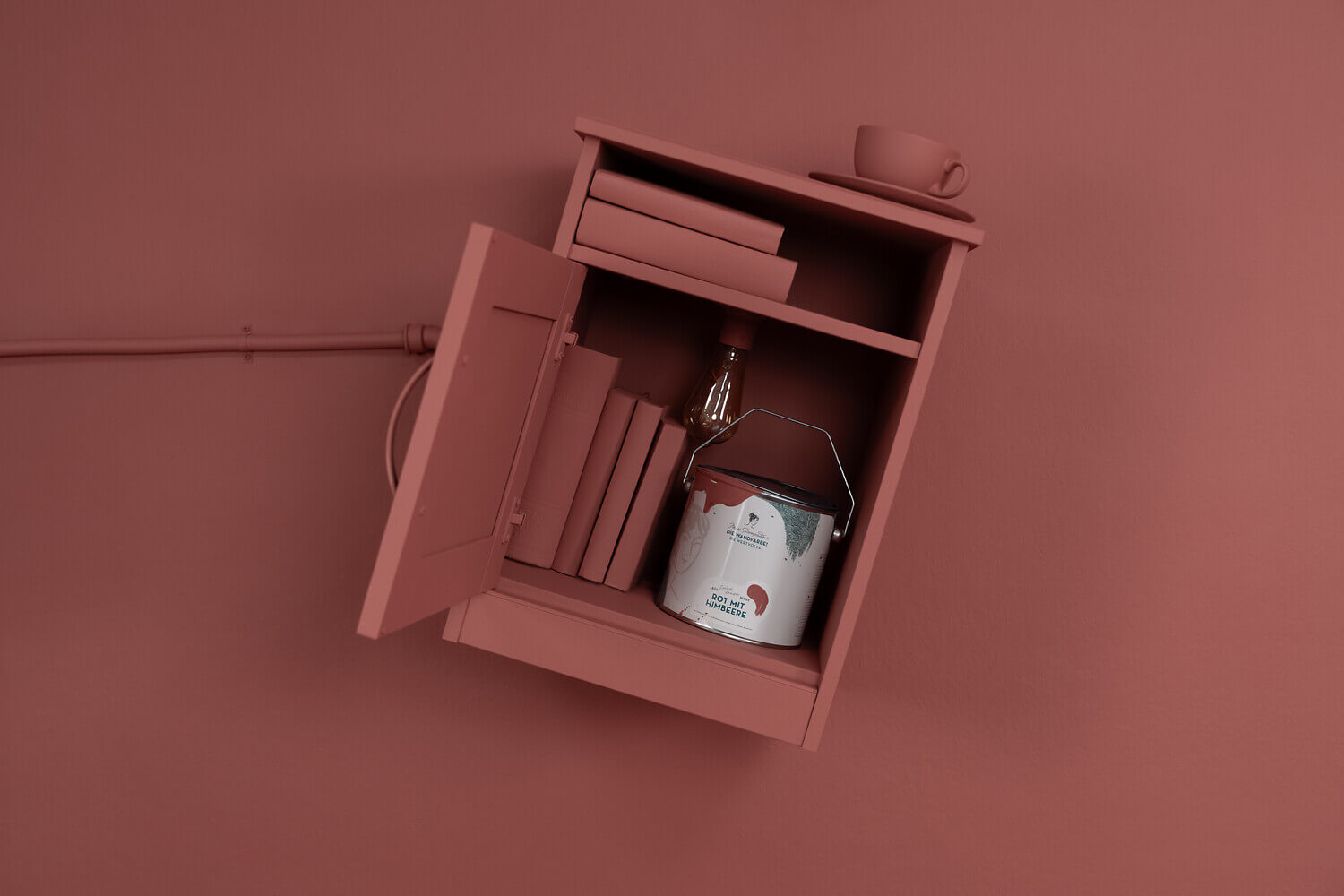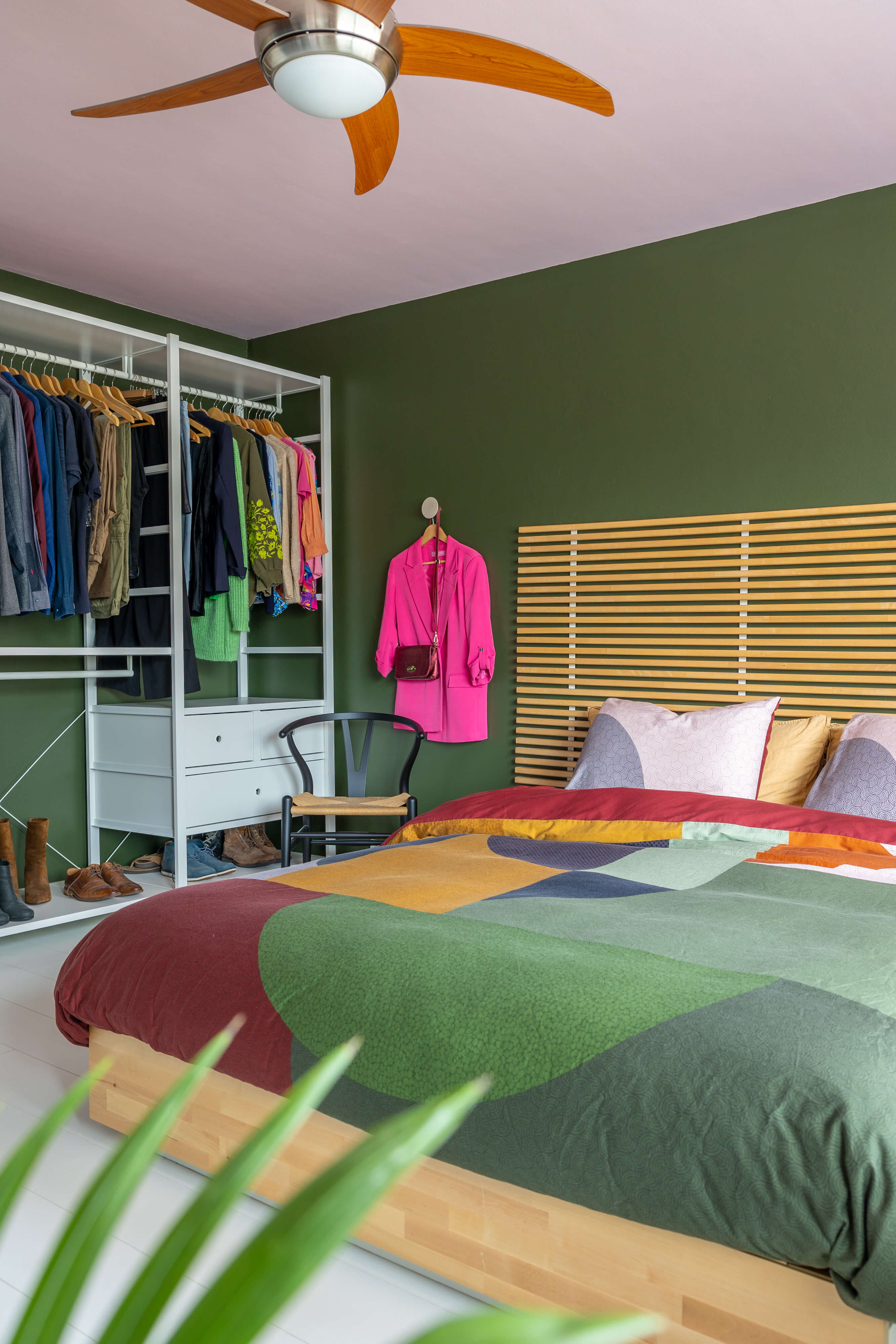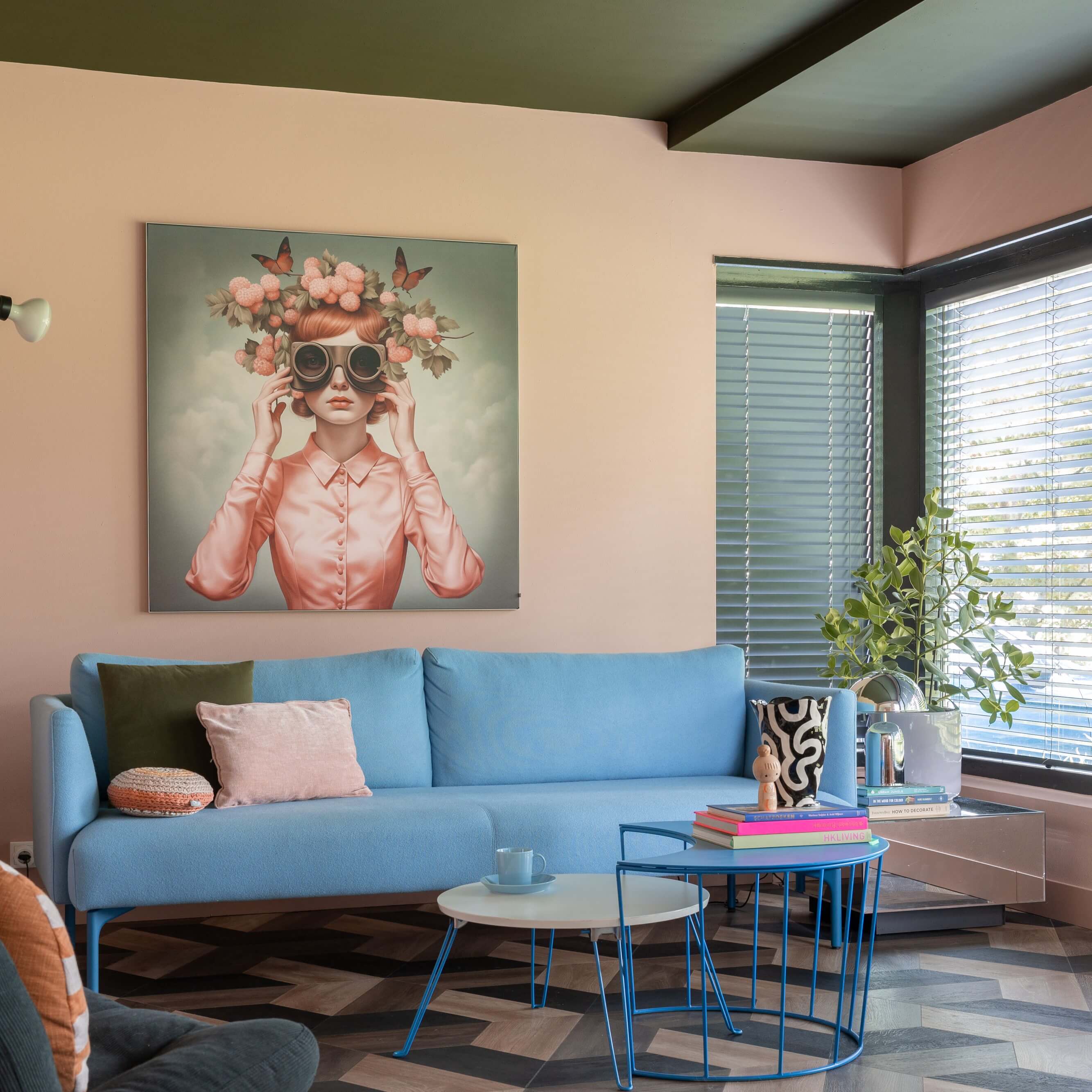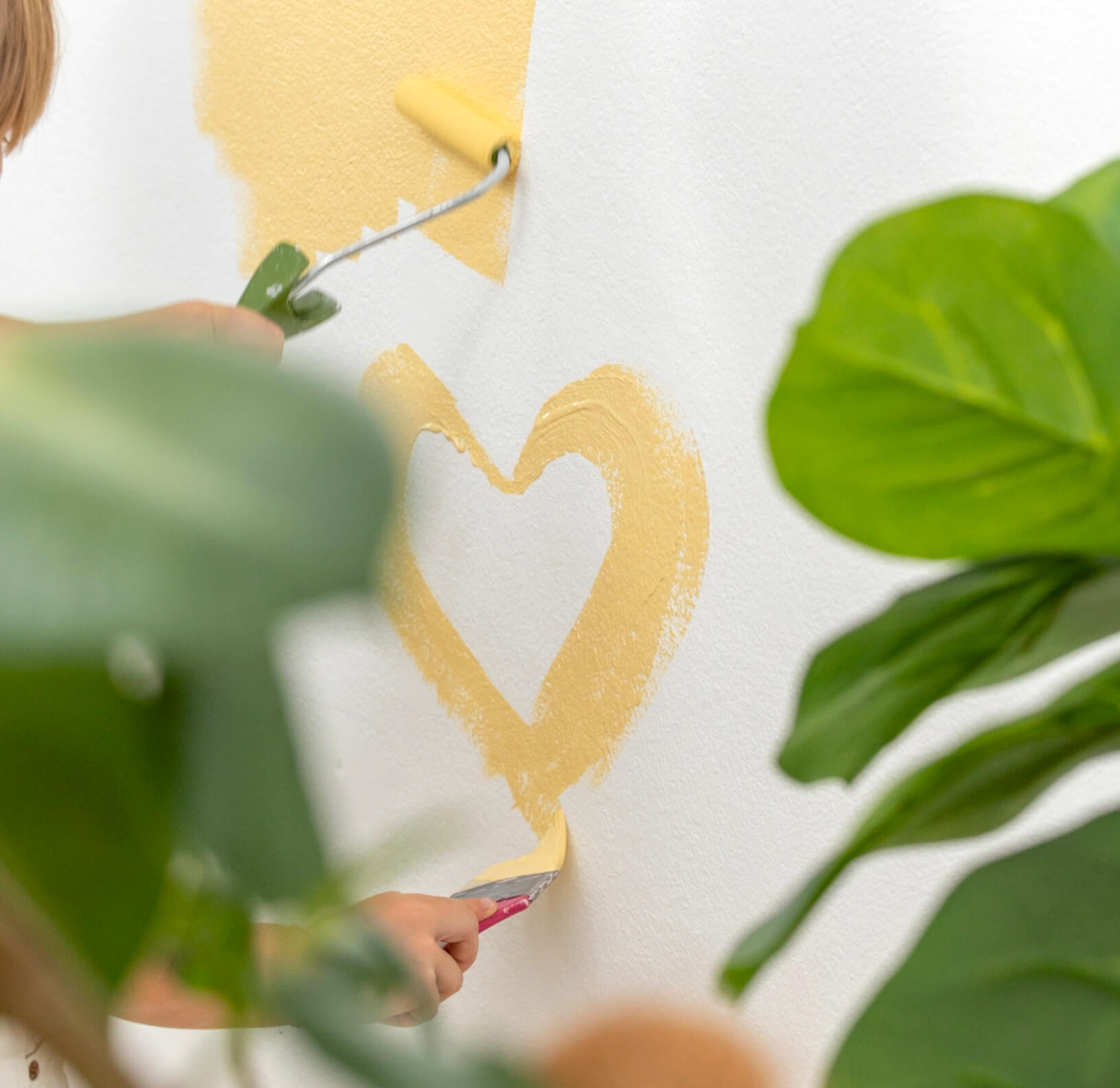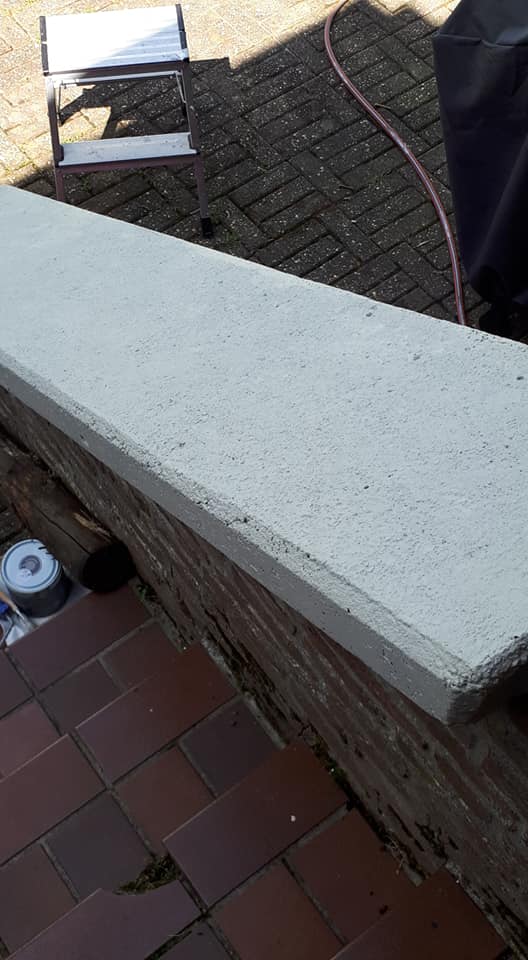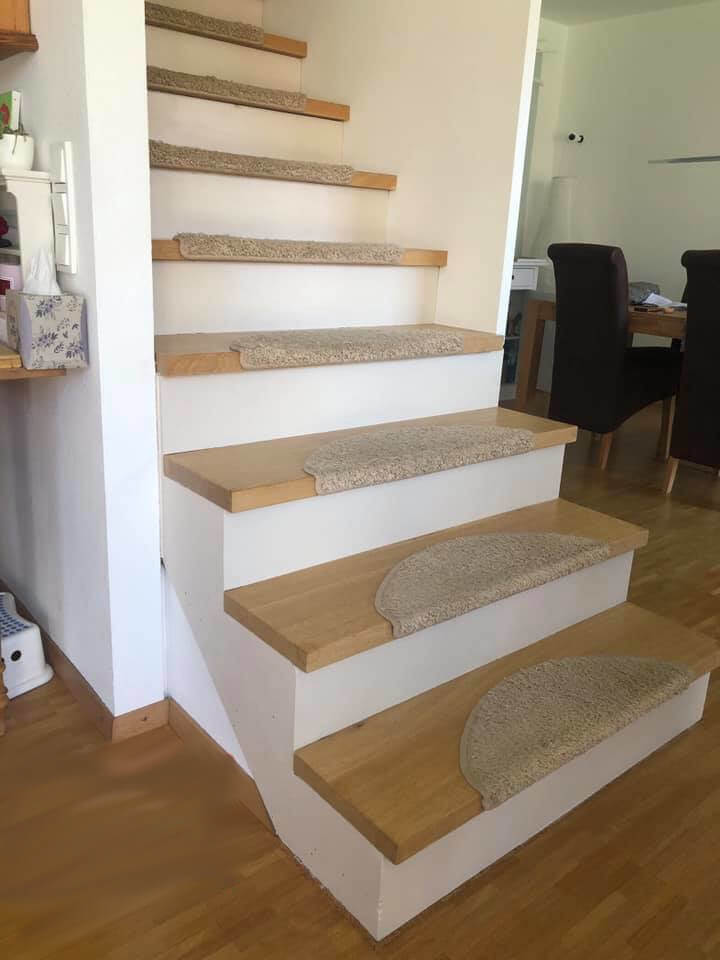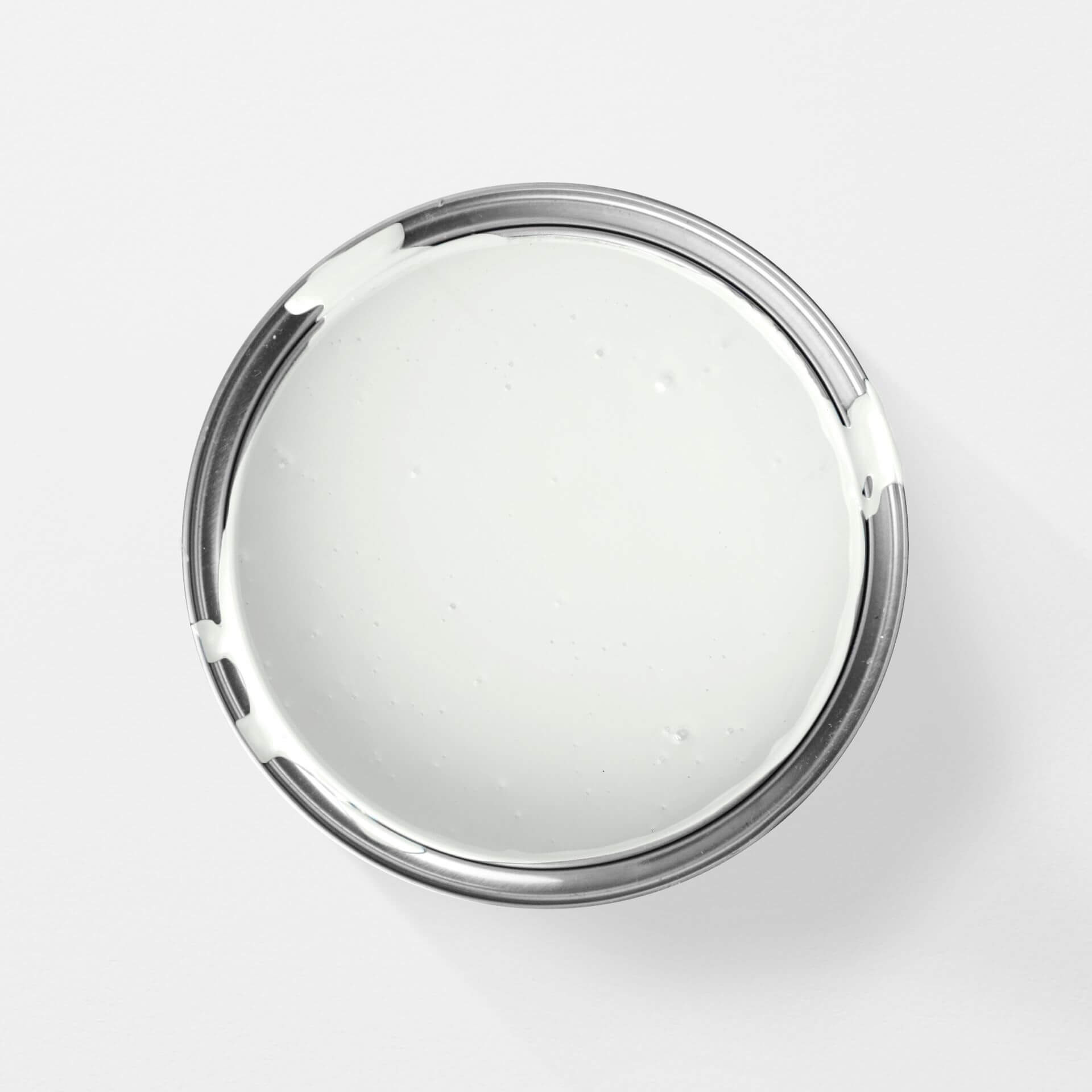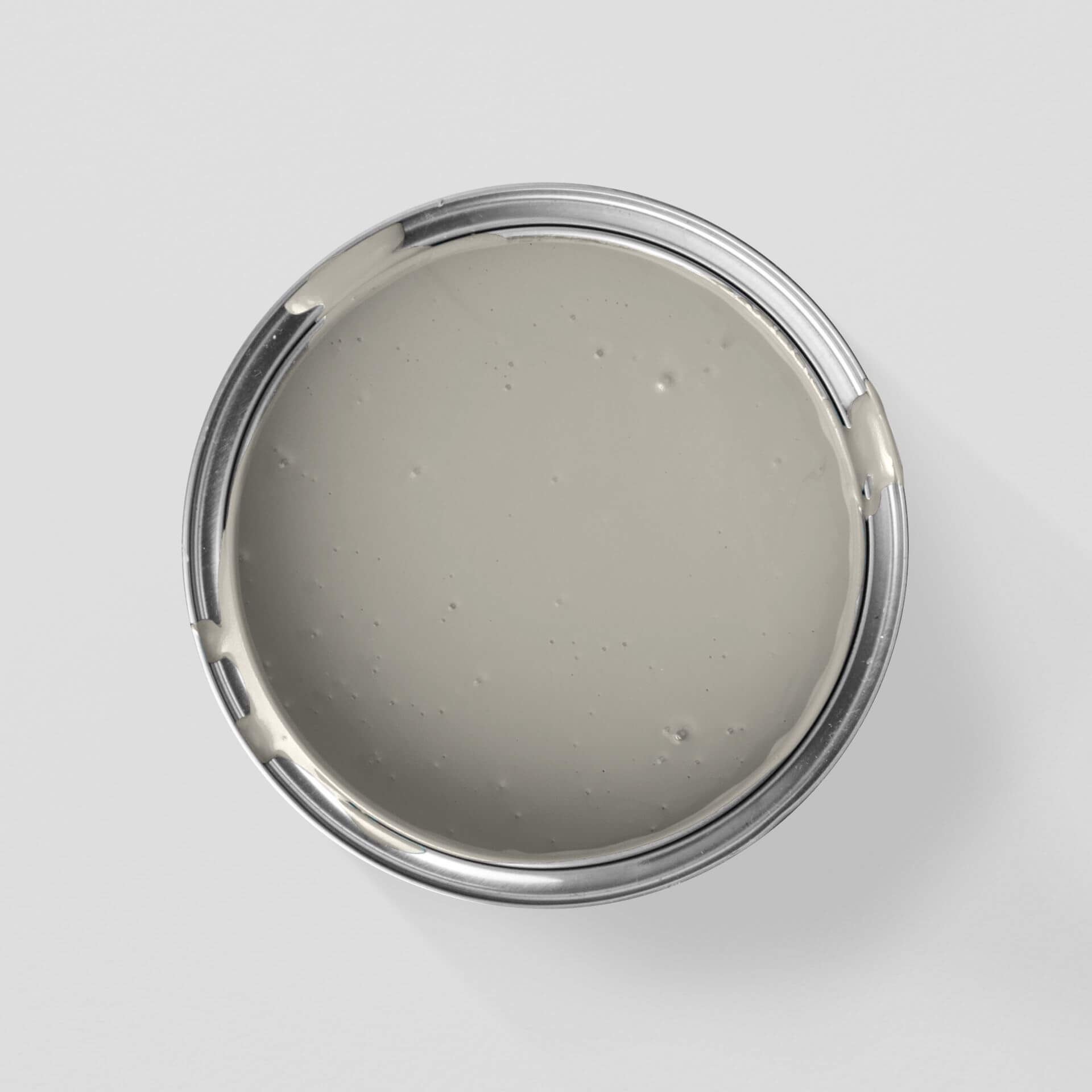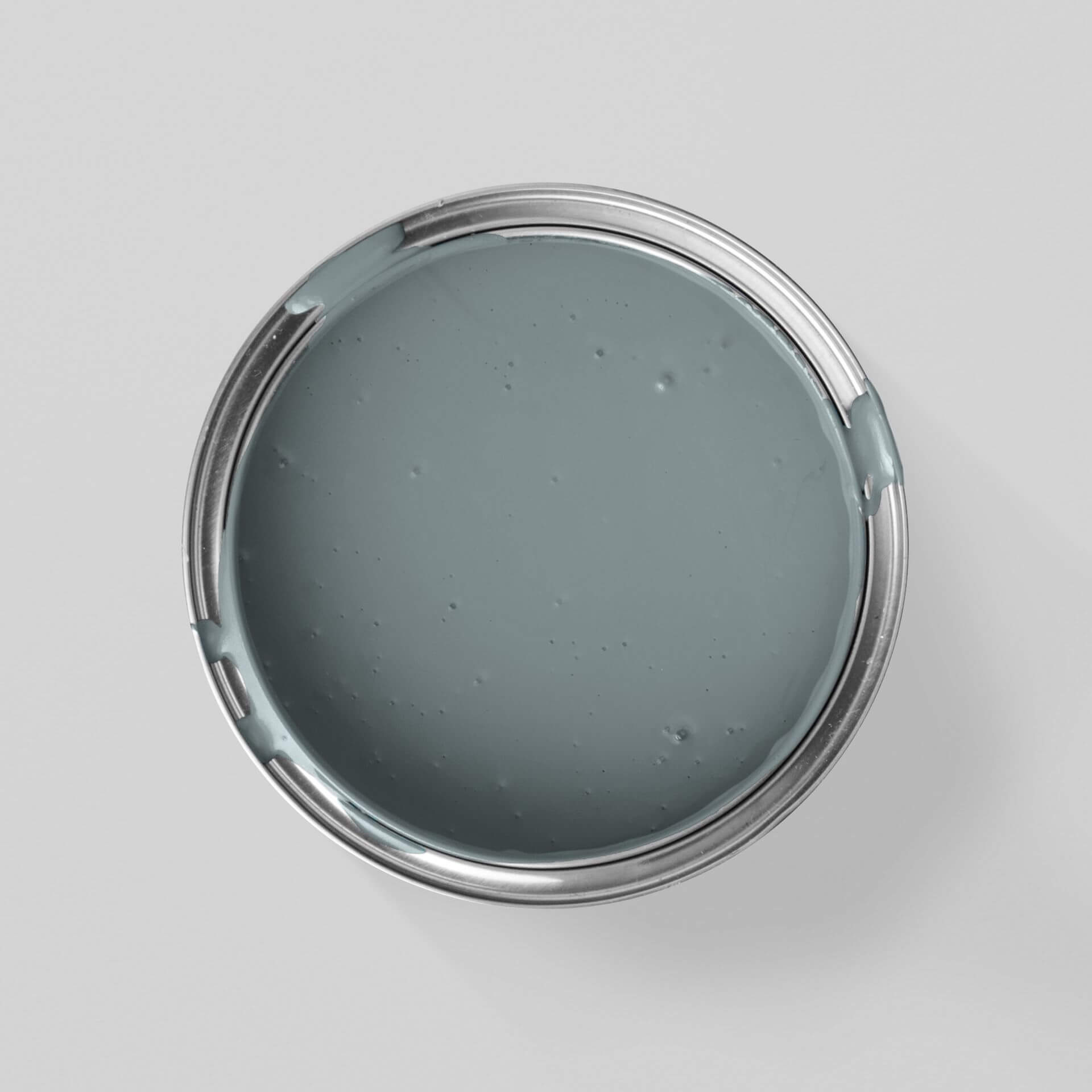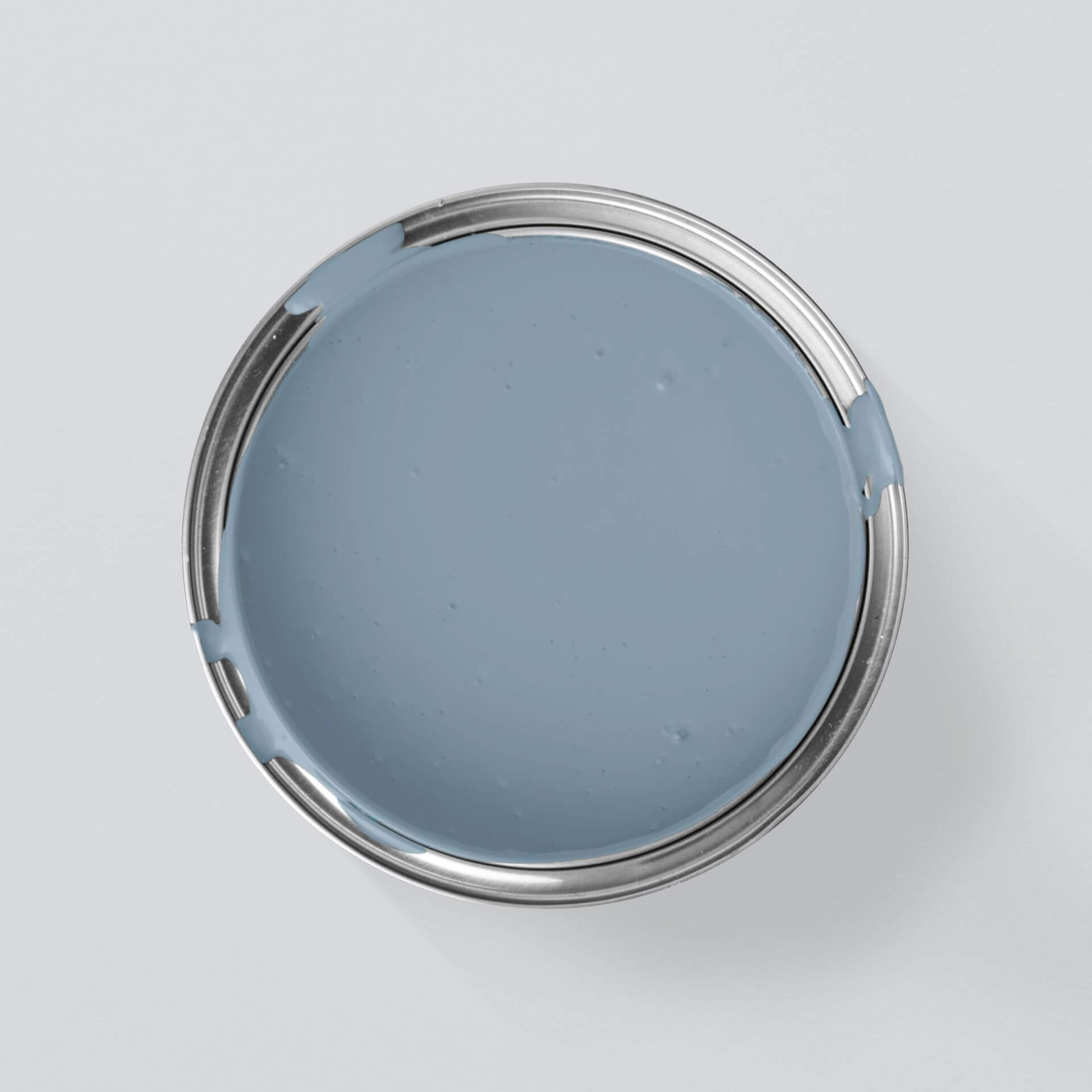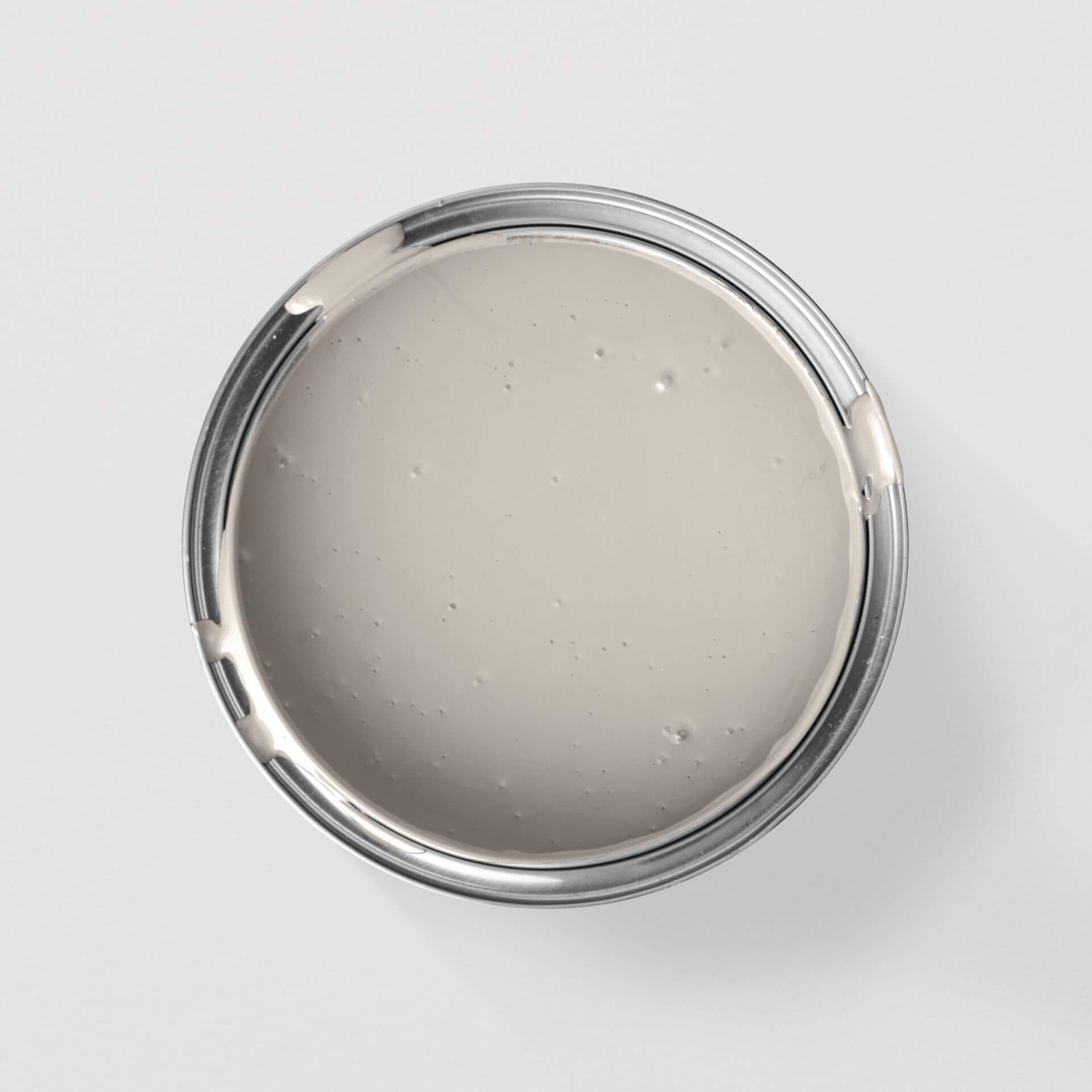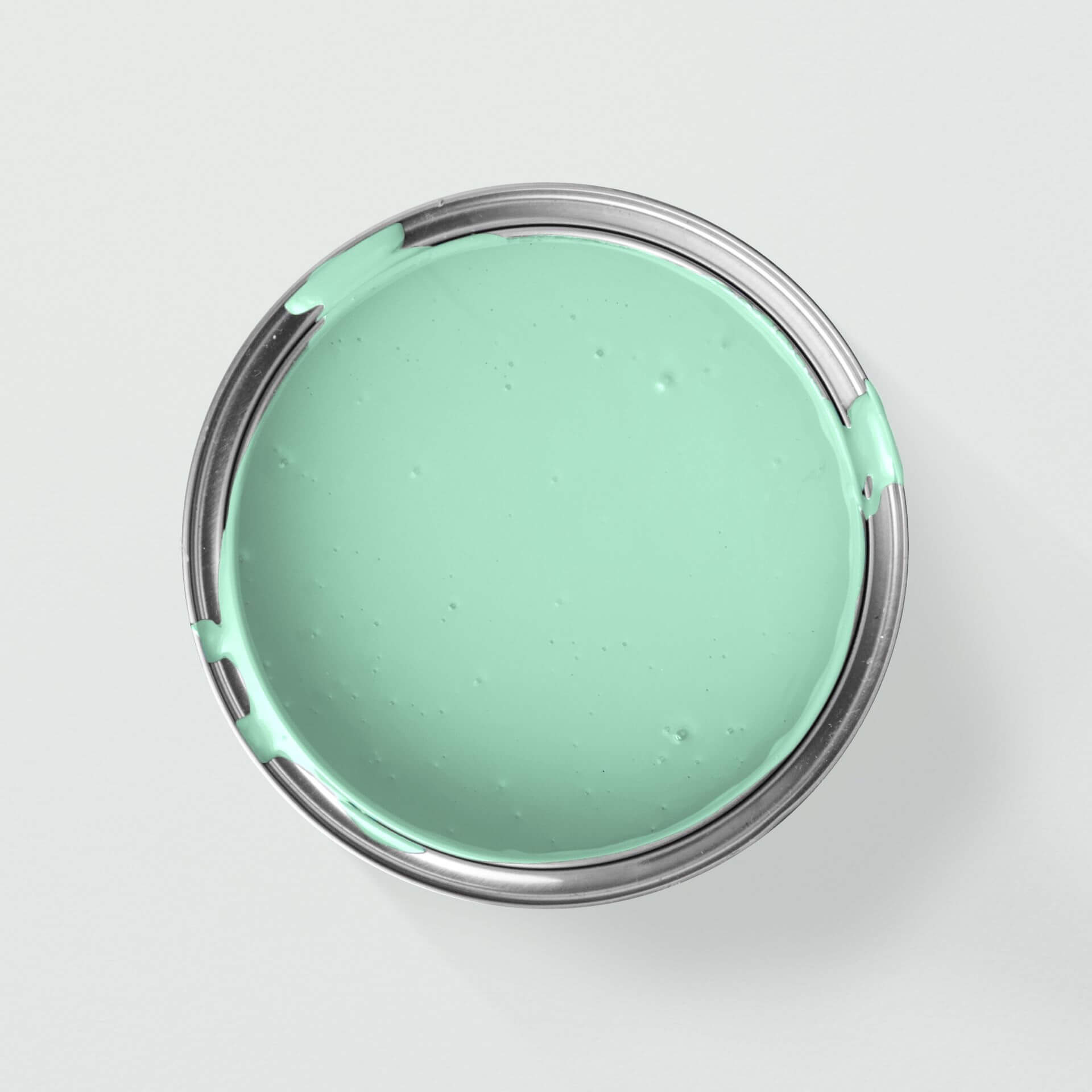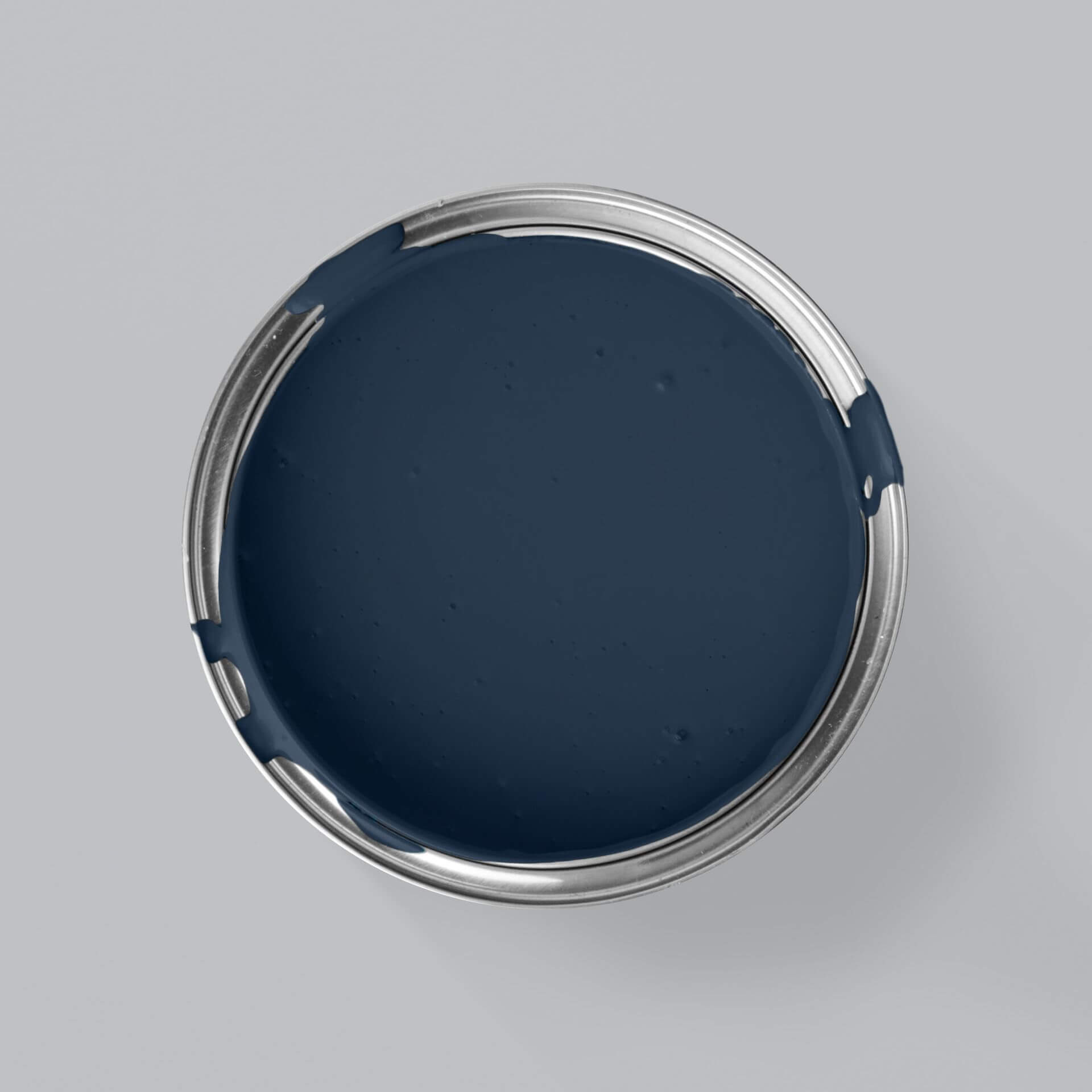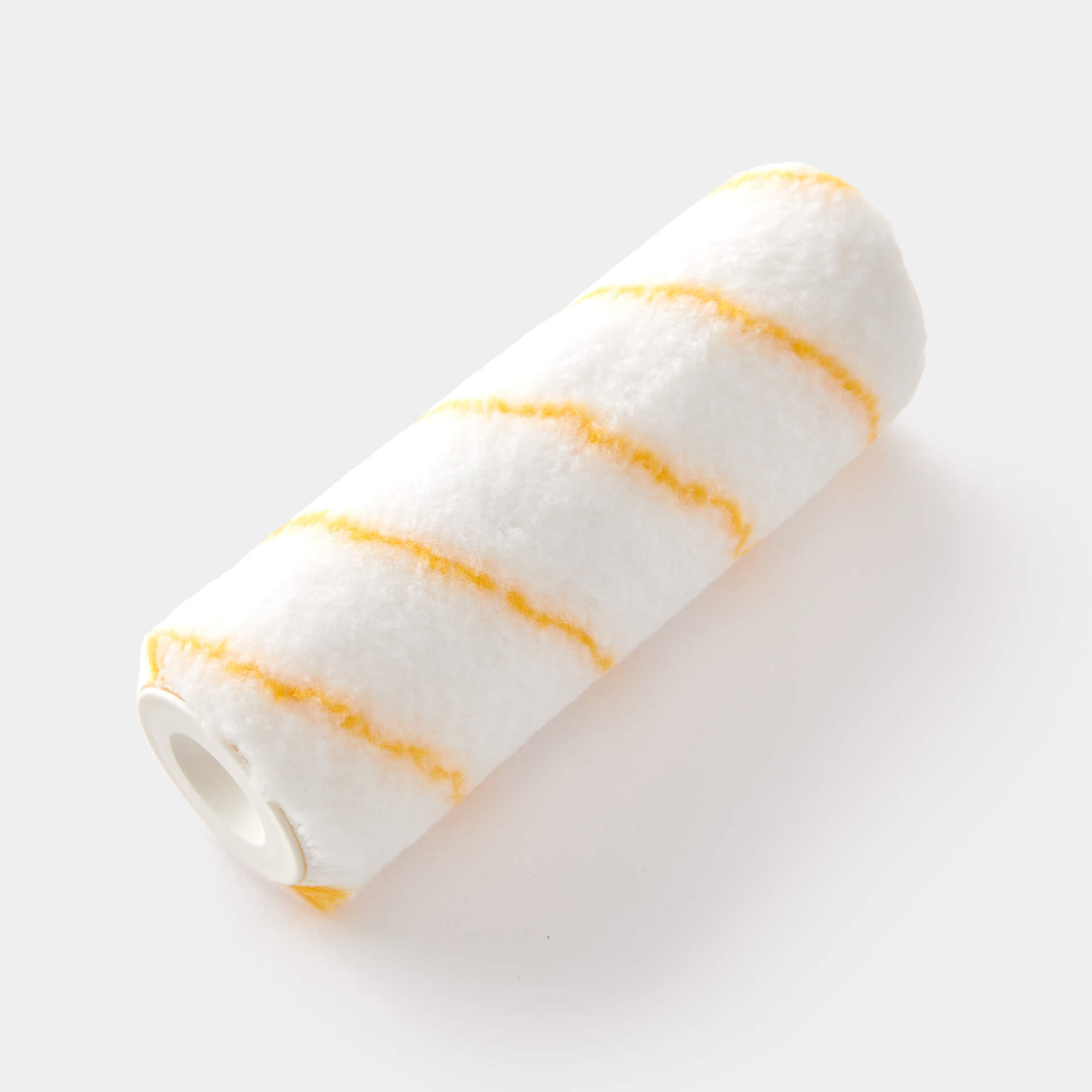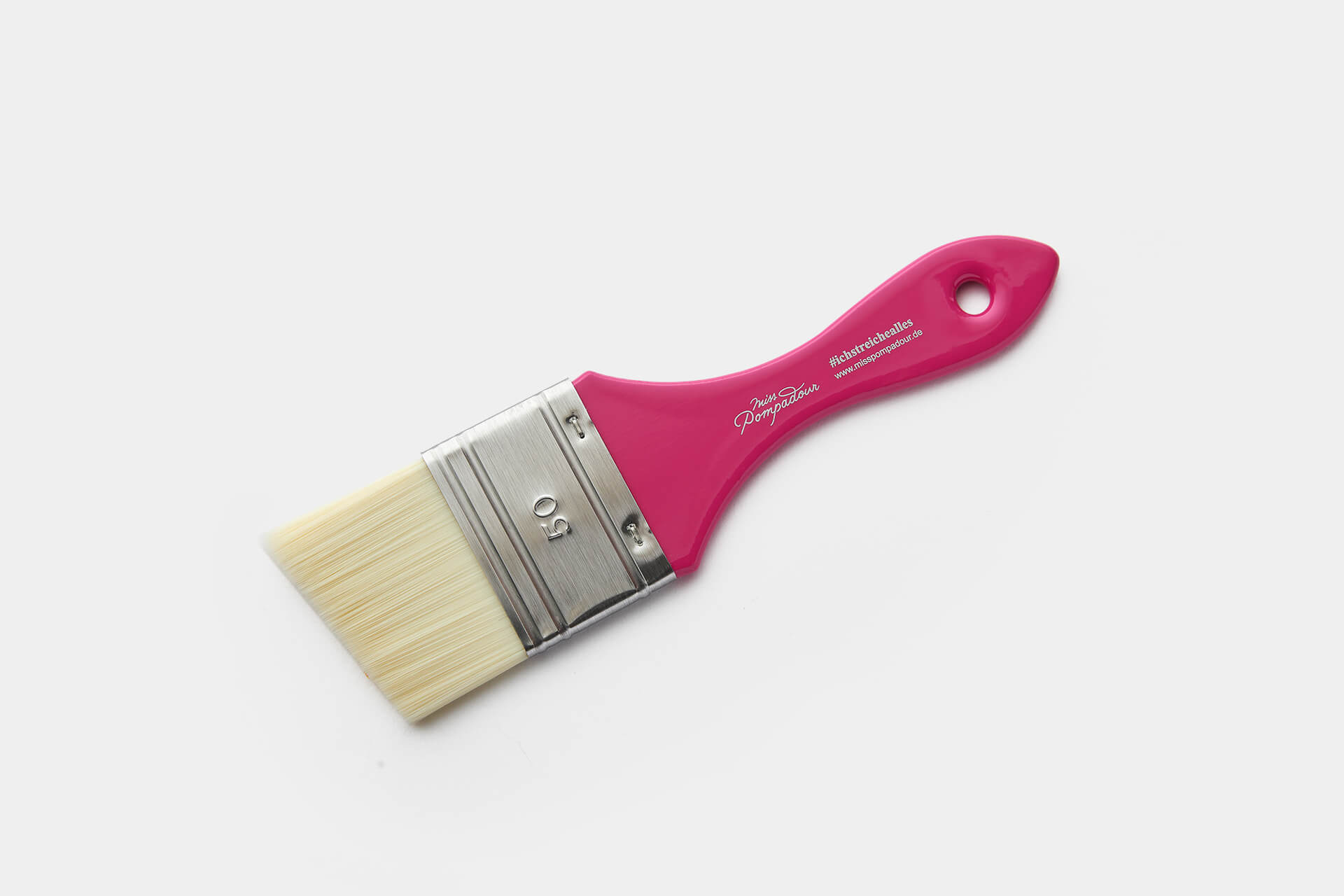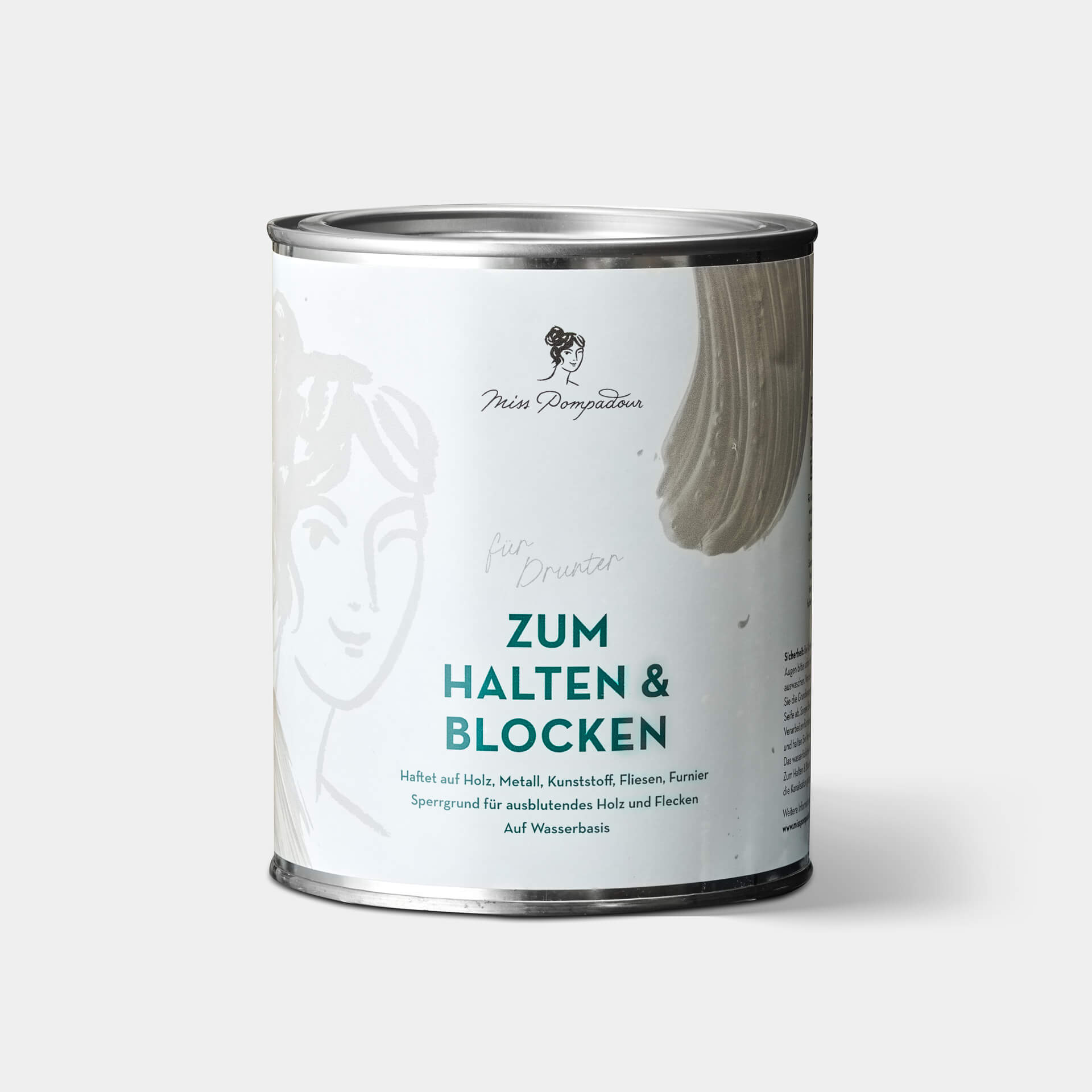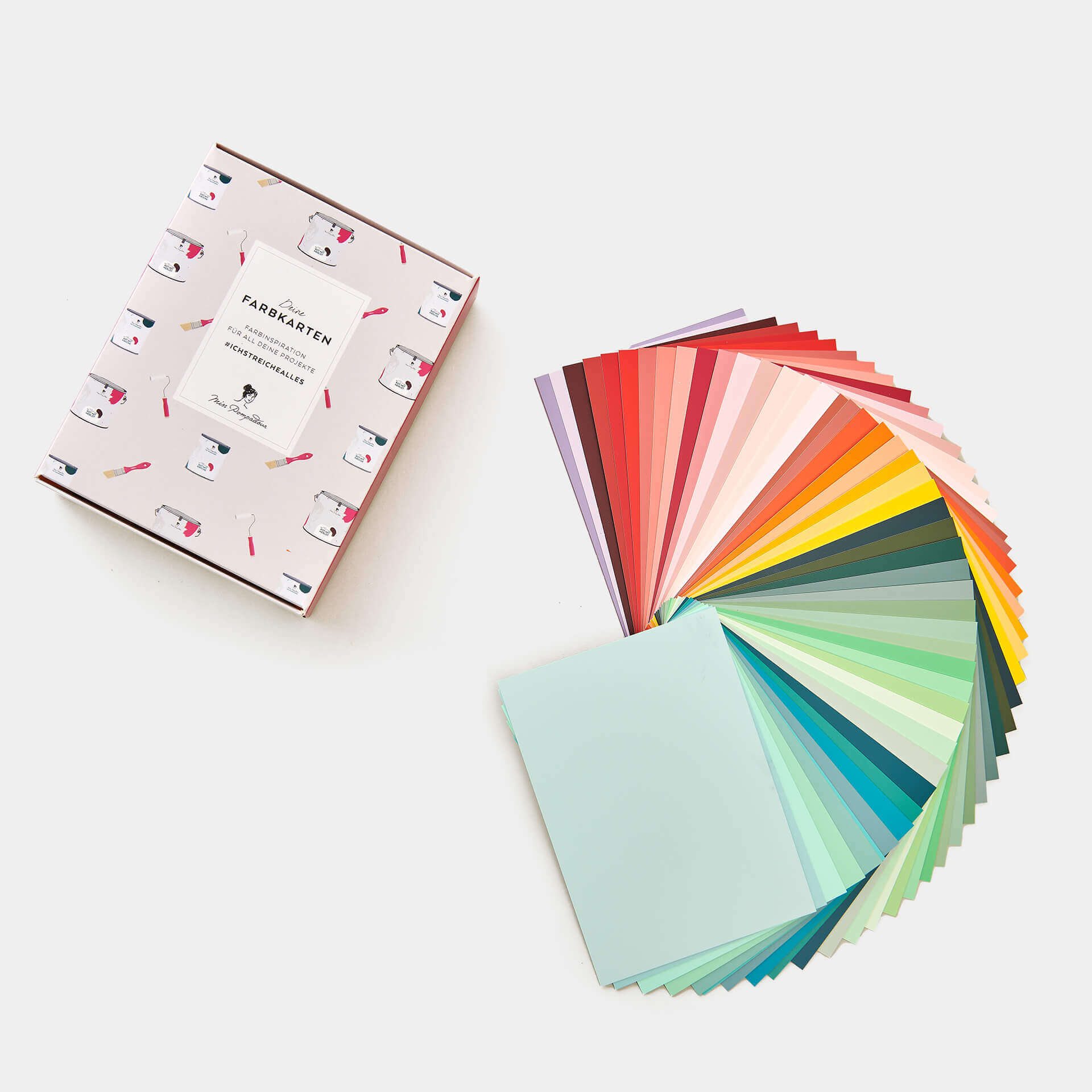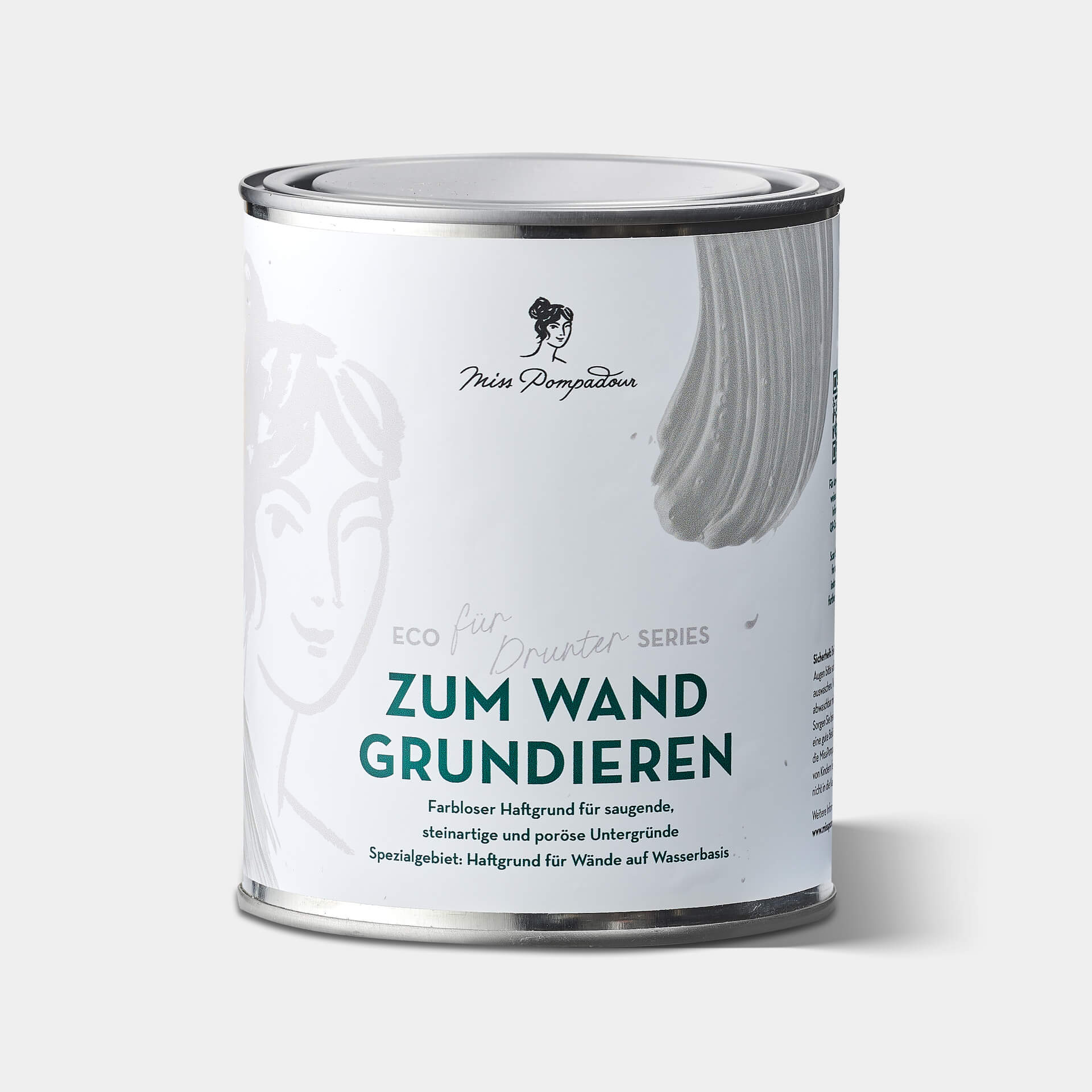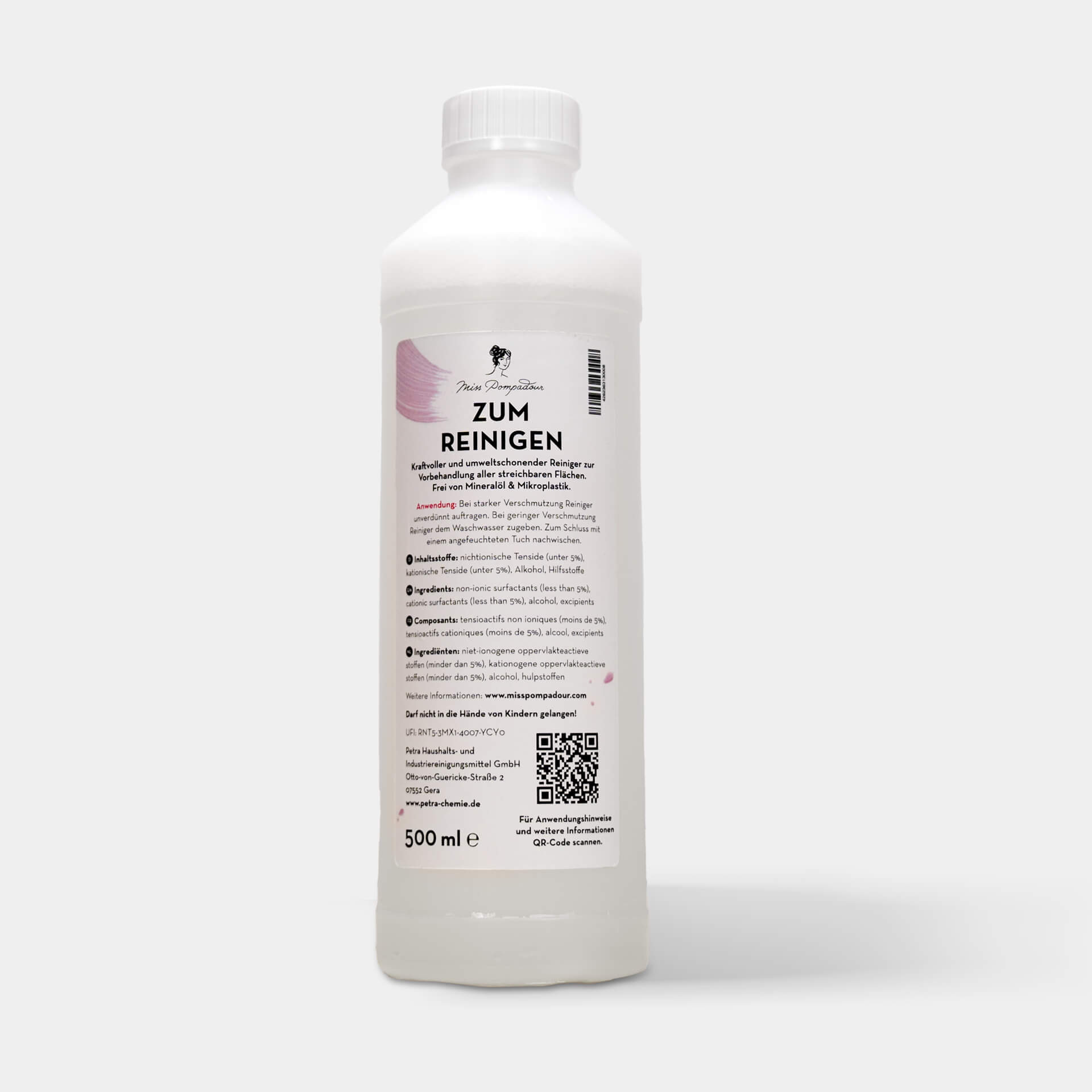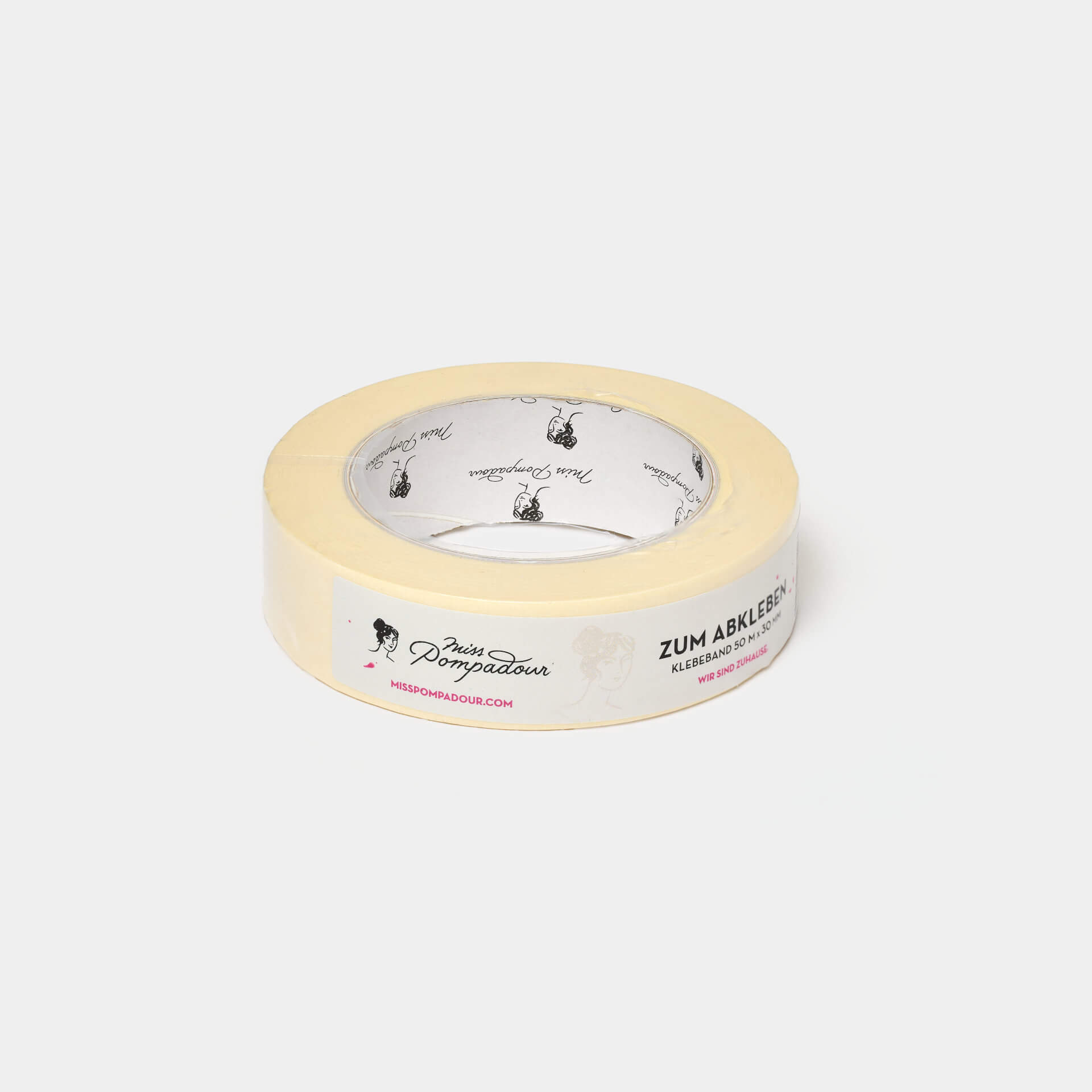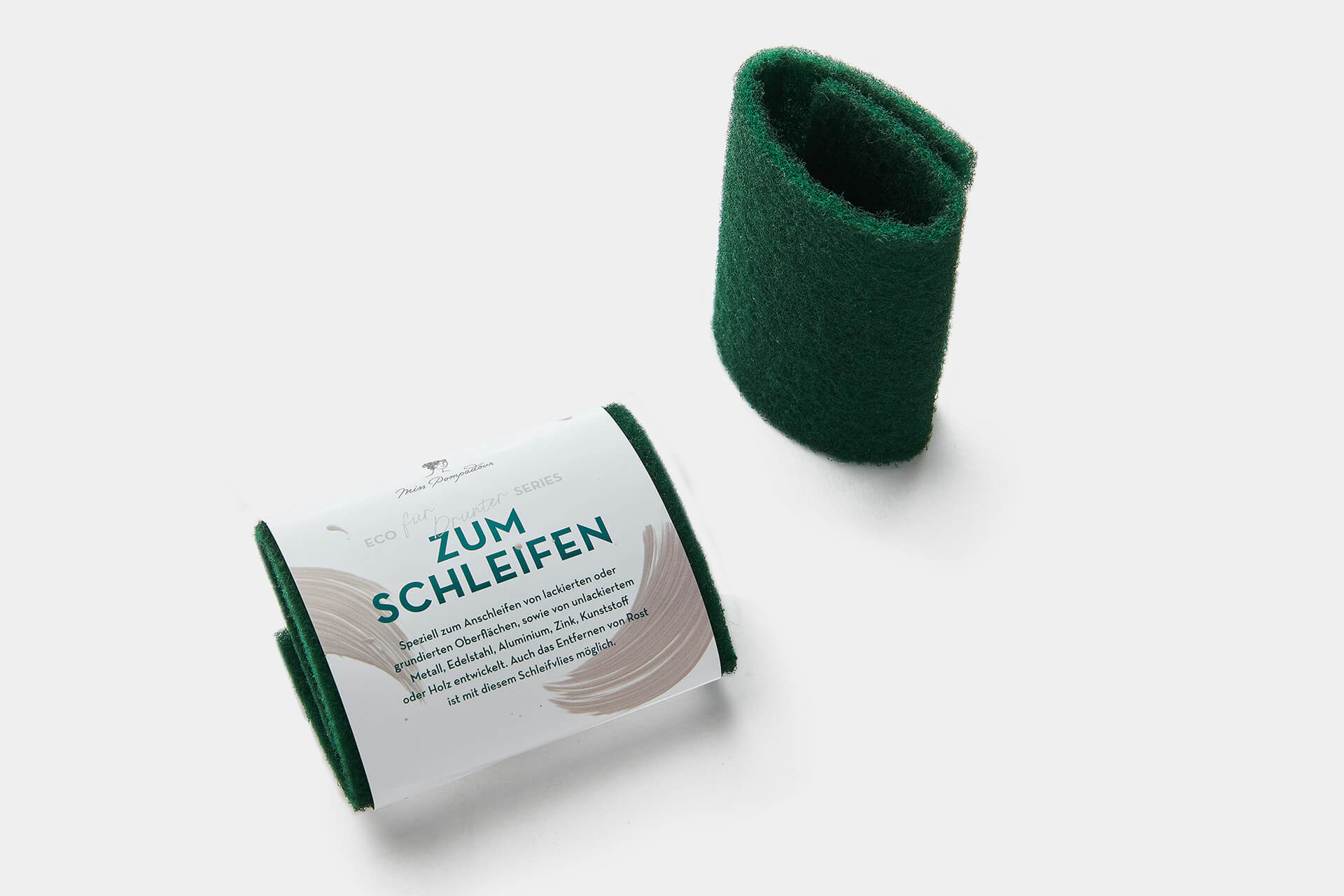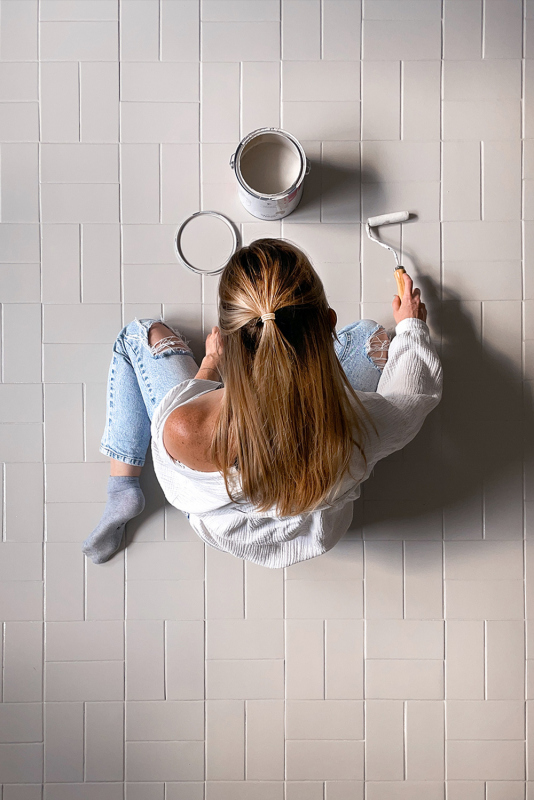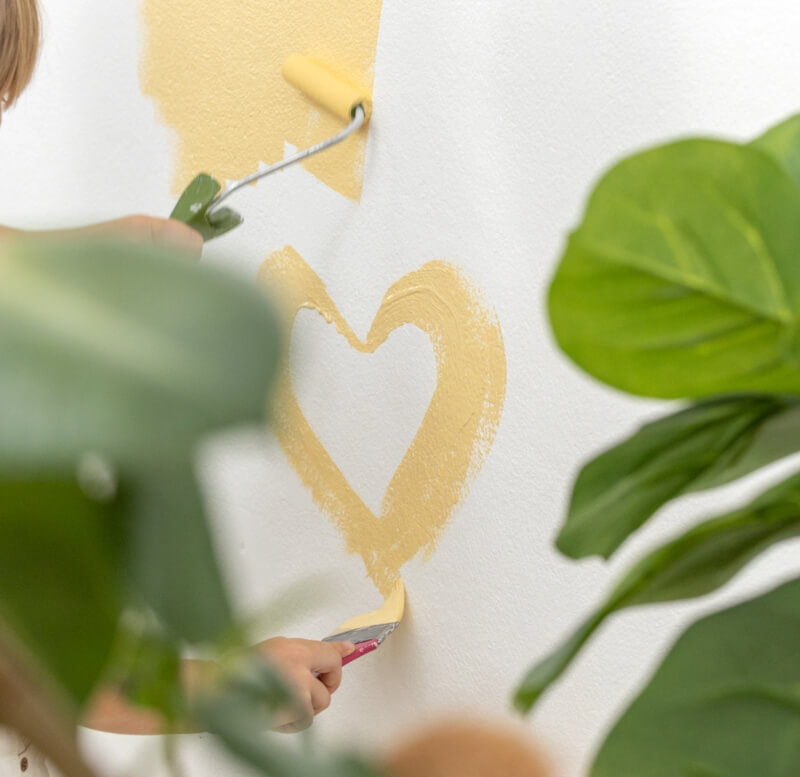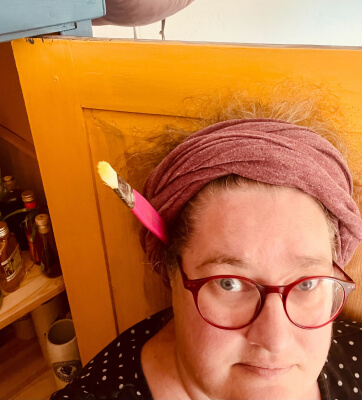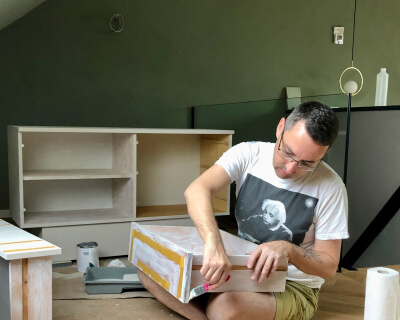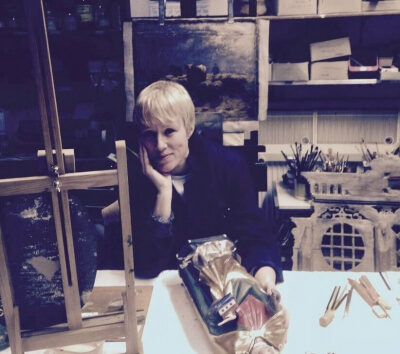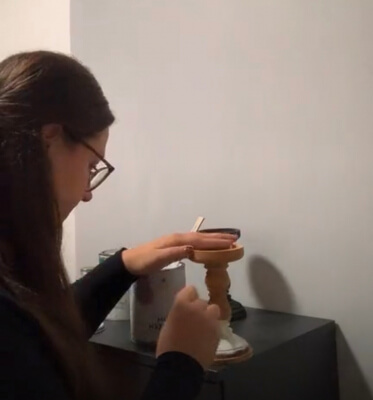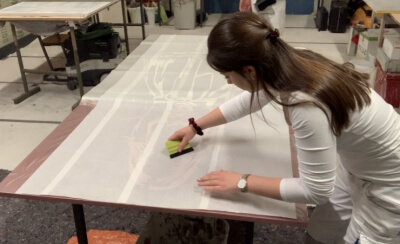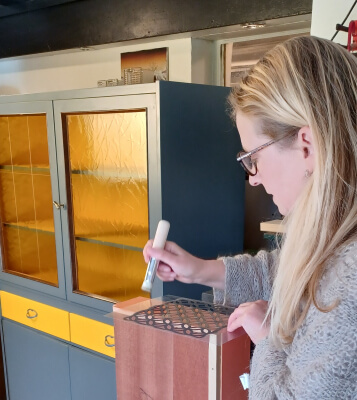Painting Concrete: DIY-Tutorial & Pro-Tips
4 min reading time
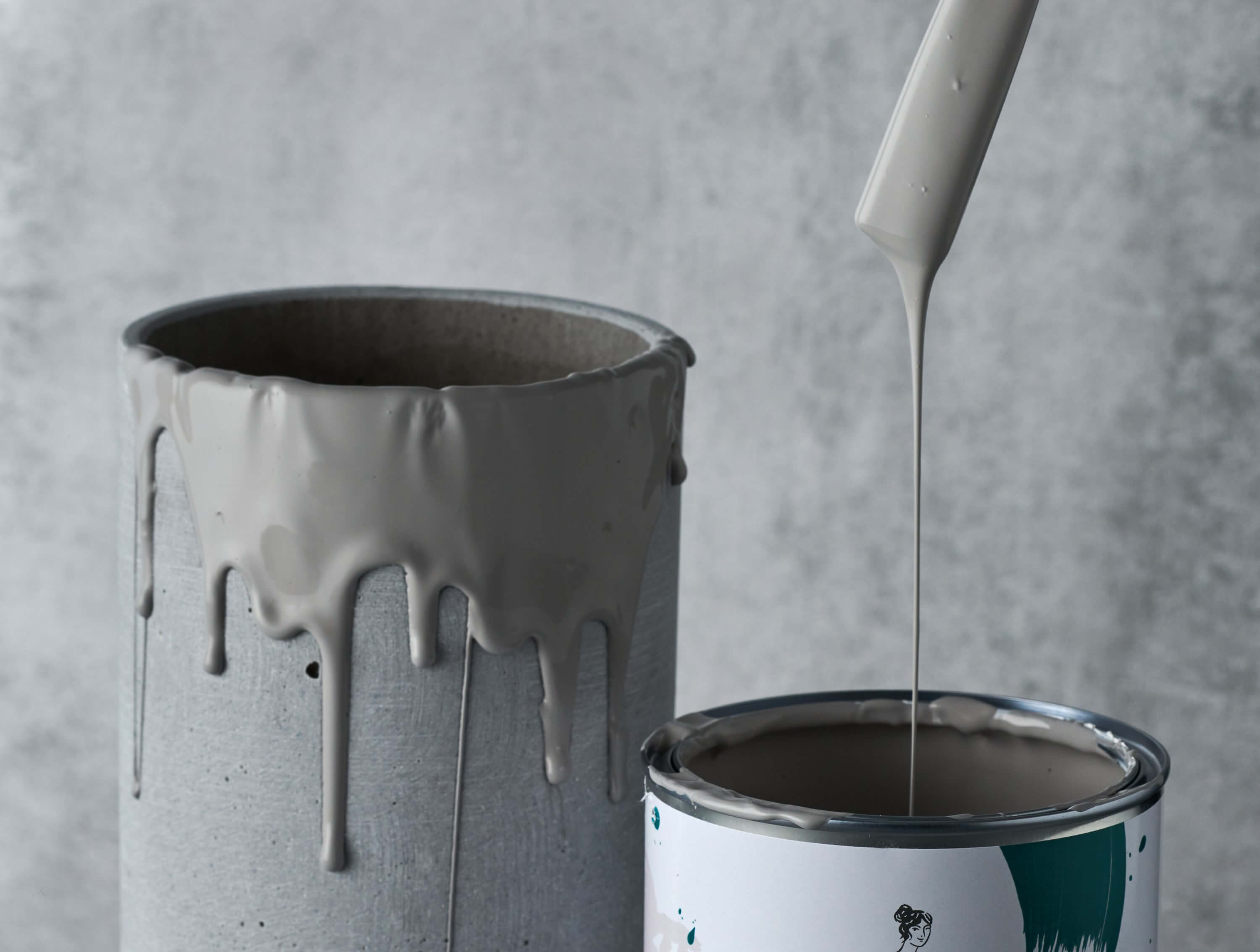
Concrete is a great building material that can be used both indoors and outdoors. Whether it's the concrete wall in your garden or the smoothly polished exposed concrete in your home, we'll show you how to paint boring grey concrete to bring colour into your home.
Before / After photos from our community
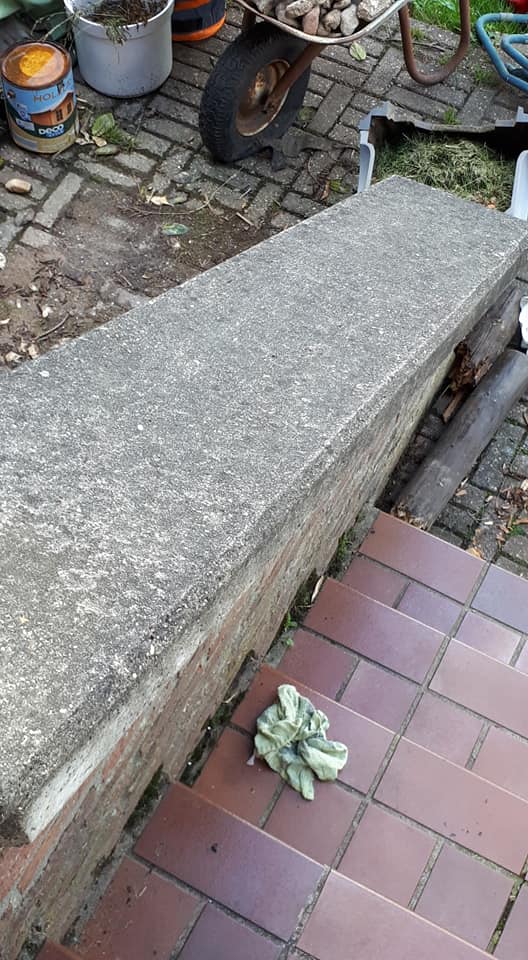
Before
- The old handrail was getting a bit long in the tooth.
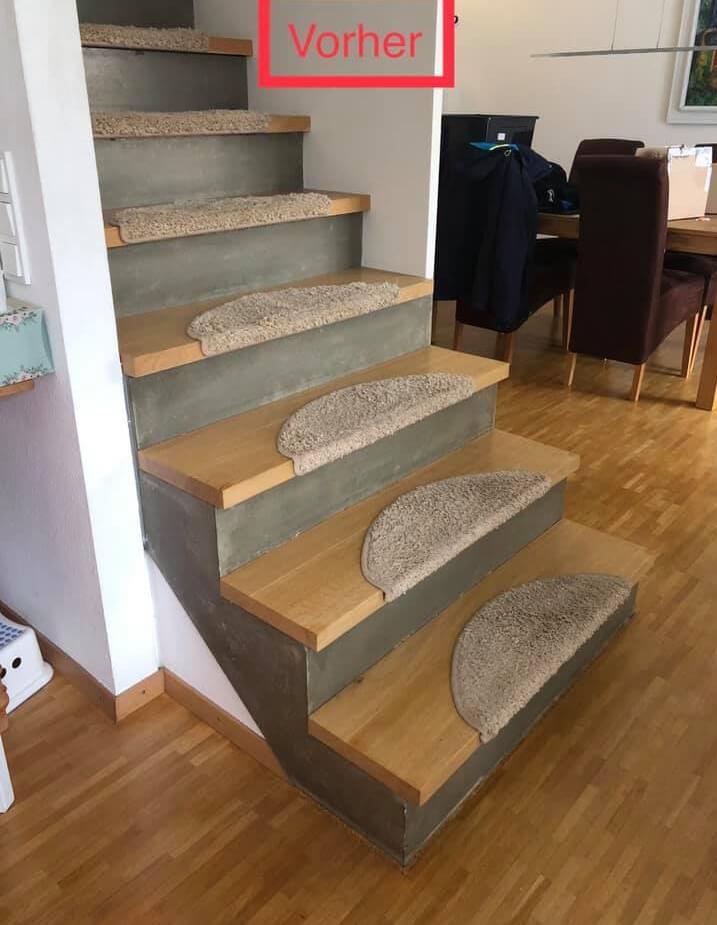
Before
- The concrete didn't really match the rest of the interior.
Preparation: How to choose the right colour for your concrete project
Concrete is generally very easy to paint. Our MissPompadour Eggshell Varnish in particular is perfect for exterior and interior concrete surfaces.
Concrete walls can of course also be painted with wall paints indoors. Here you can choose between the MissPompadour wall paints The Functional Wall Paint, The Valuable Wall Paint and the LittlePomp chalk paints. The main difference lies in their durability. The Functional Wall Paint is a washable paint that can really take a beating, while The Valuable Wall Paint is less robust, but extra matt and preservative-free. Our LittlePomp chalk paints impress with their particularly powdery matt surface and delicate colour shades.
What do you want to paint?
Many elements in your home can be made of concrete: stairs, walls, floors or ceilings. For interior concrete walls or ceilings, slightly porous concrete is usually used, which requires a lot of paint due to its rough texture, but is basically easy to paint. However, a screed must be sealed with its own screed primer before painting.
Fair-faced concrete is smooth, polished concrete that is also easy to paint. You can find this as a wall, ceiling or floor element.
Painting stairs - at least indoors - is also not rocket science. However, if it is an external concrete staircase, you must bear in mind that our paints do not tolerate standing water. In this case, you cannot paint the horizontal surfaces.
Do you want to paint concrete outdoors or indoors?
Concrete can be found outdoors, for example, as a garden wall, in the stairs leading down to the cellar or as sturdy supports for the garden fence. Even if you want to paint your garage door, you may come across concrete to the left and right of it, which may also need a new colour.
If you want to paint concrete on the outside, we recommend using our varnishes. Indoors, you can also work with wall paints
Which concrete do you want to paint?
While a screed or plaster is usually laid over the rough utility concrete, especially indoors, the smoothly polished exposed concrete is increasingly being used as an effective stylistic element. If you want to paint concrete on the inside, first clean it thoroughly and apply a primer if necessary. Then you can paint the exposed concrete very well. However, concrete can also be very coarse and absorb a lot of paint. In this case, a primer is definitely advantageous to even out the absorbency.
Painting concrete professionally: Instructions from MissPompadour
Painting concrete will bring you joy because it's easy and the result always looks great, whether you want to paint your concrete floor, ceiling or walls.
Step 1: Thorough cleaning
The first thing to do is to thoroughly clean all the surfaces you want to paint. Especially outdoors, it is important to remove cobwebs and dust as well as coarse dirt and green discolouration. The best way to do this is to use our To Clean - MissPompadour Cleaner. This will give you a dust and grease-free surface.
Step 2: Cover and tape off
Cover everything that needs to be protected from paint splashes, such as the floor, with foil, fleece or cardboard. Simply tape over door and window frames or other parts that are not to be painted.
Step 3: Repairing damaged areas
With the To Fill - MissPompadour Filler, you can also use this opportunity to repair old drill holes and imperfections that you want to make disappear.
Step 4: Primer
It is not absolutely necessary to apply a primer to concrete. However, MissPompadour - To Prime Walls can be helpful for open-pored and therefore very absorbent concrete. As a deep primer, it ensures an even surface and therefore less paint consumption. If there are impurities on the painted surface - such as water stains, blood stains or biros marks - then use our To Bond & Block - MissPompadour Primer. This prevents these traces of use from showing through the colour layer again later - especially if you are using wall paints.
Step 5: Painting the concrete
You can use brushes, roller brushes or spray systems to paint concrete. You should always apply two coats of paint. If the concrete is very rough and absorbent, you can dilute the colour with around 5-10% water for the first coat
FAQ: Frequently asked questions
Can I paint directly onto concrete?
Yes, you can paint concrete directly. However, if it is very rough, you should use a primer to even out the absorbency or dilute the paint when you first paint it. If there are old traces of use on the concrete, a suitable primer will also help so that these do not show through the paint again after painting.
What paint can I paint on concrete?
All our colours are suitable for use as concrete colours - both our varnishes and our wall paints. However, our silk matt varnishes are best suited, as they are very robust, develop a beautiful surface gloss and are available in many great colours.
Material and Accessories for Painting Concrete
Besides the paint itself, you will need the following items to paint your concrete surfaces:
- Broom, bucket and cleaning cloth: To Clean the surfaces.
- Cleaning agent: To get a clean, dust- and grease-free surface, it is best to use our environmentally friendly To Clean - MissPompadour Cleaner.
- plastic drop cloth and adhesive tape: Use our transparent plasticdrop cloth to protect surfaces that are not to be painted and prevent unwanted paint splashes. To Mask is suitable To Mask - MissPompadour Adhesive Tape in various sizes.
- filler and sandpaper:To Fill - MissPompadour Filler is very suitable for repairing old holes or imperfections. Then sand with To Sand - MissPompadour Sanding Pad.
- Brush, paint roller or spray system: For precise painting, you can use our To Paint - Fine MissPompadour Brush in various sizes. If you want to paint large areas, such as a concrete ceiling, our paint roller, which we offer in two sizes, is suitable for wall paints. For varnishes, we recommend our paint roller for water-based varnishes. You can also spray particularly large areas. The Wagner paint spray system is available for this purpose.

